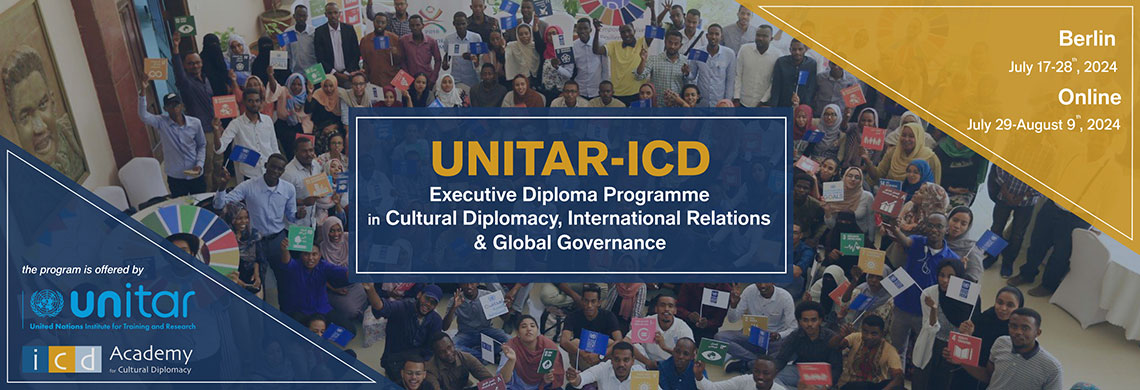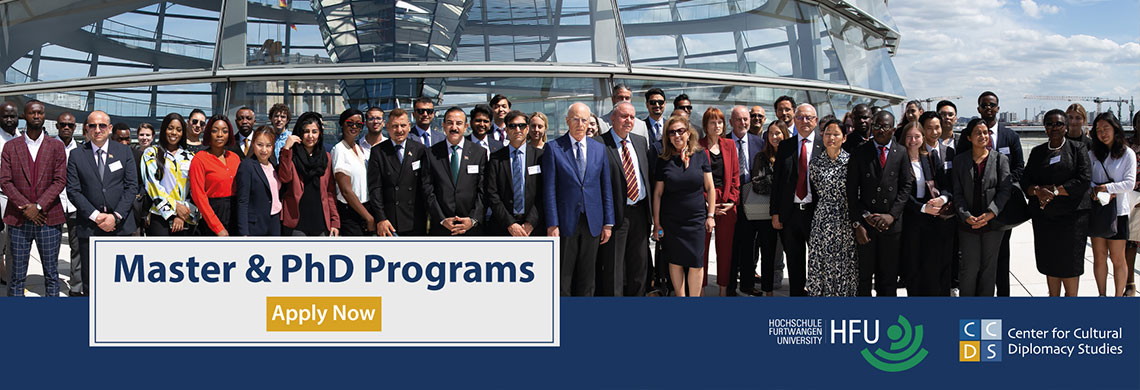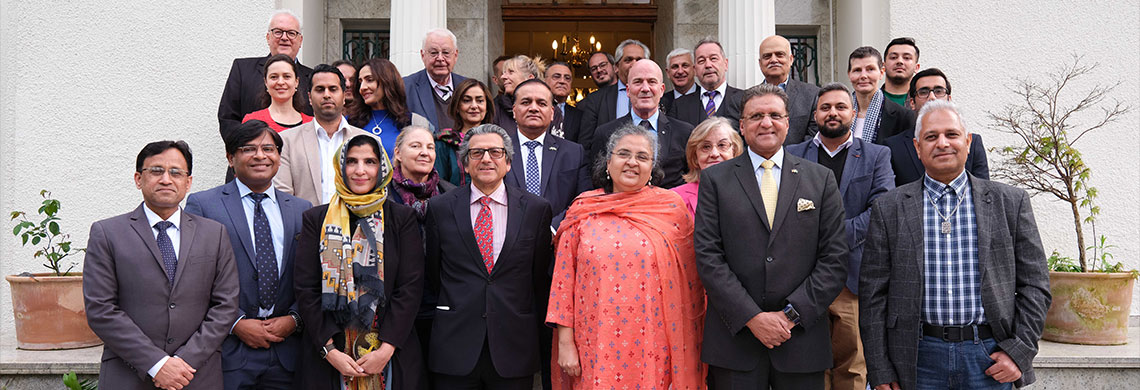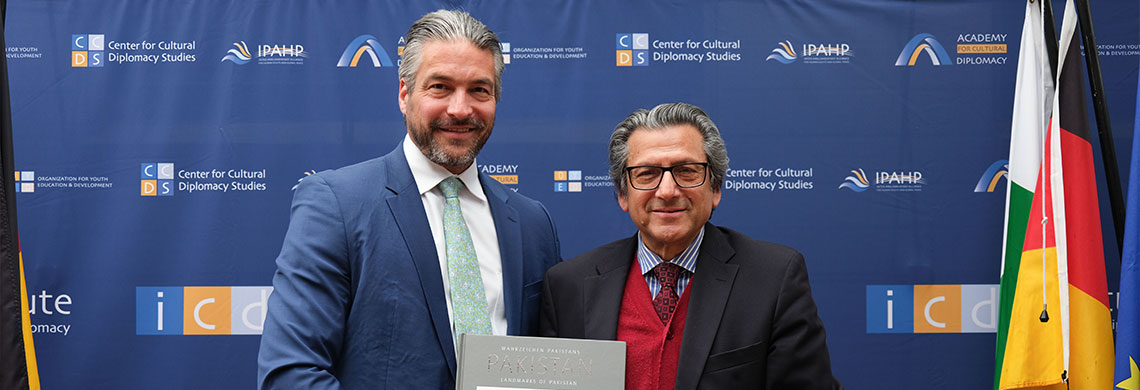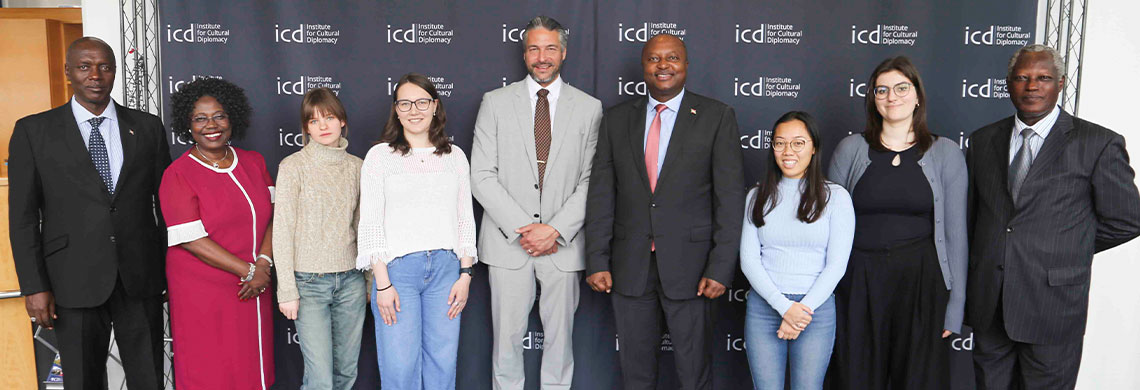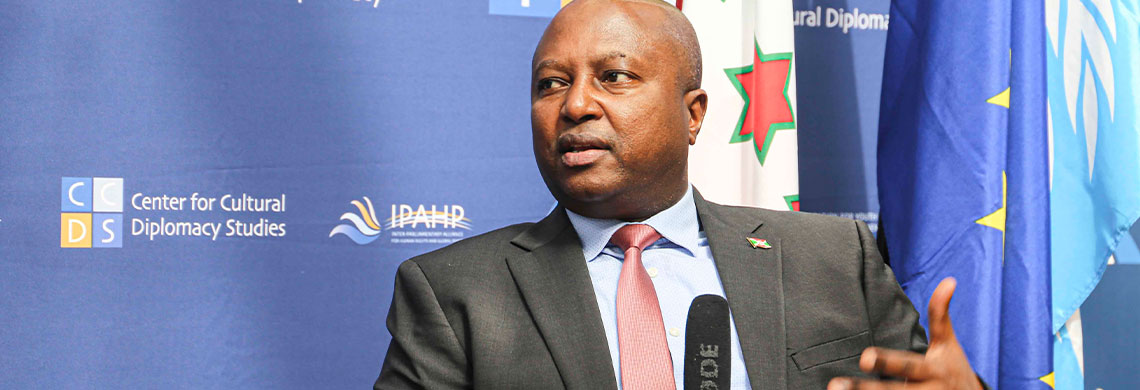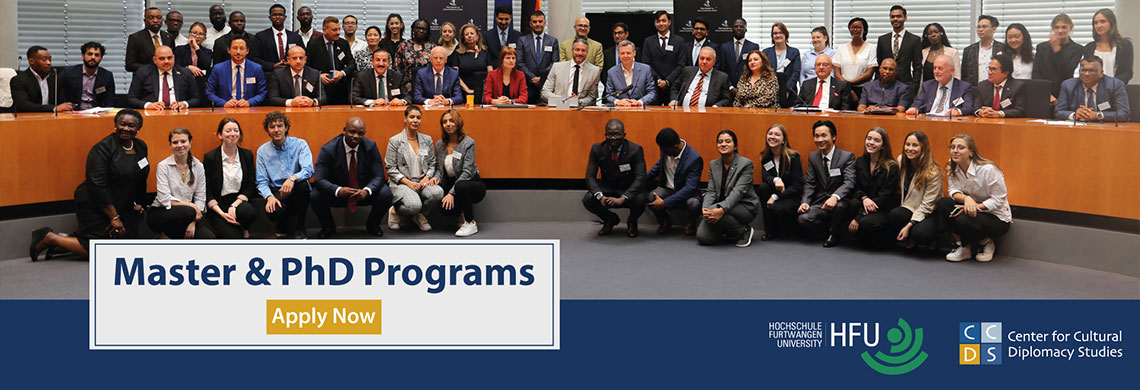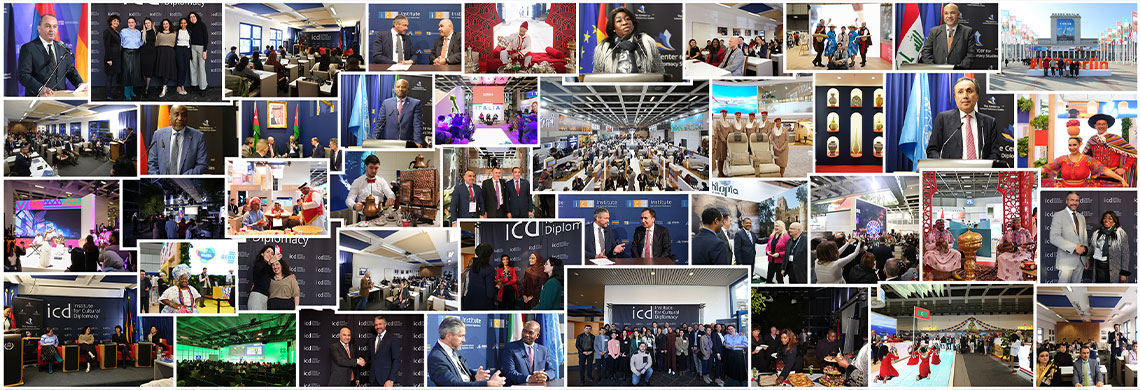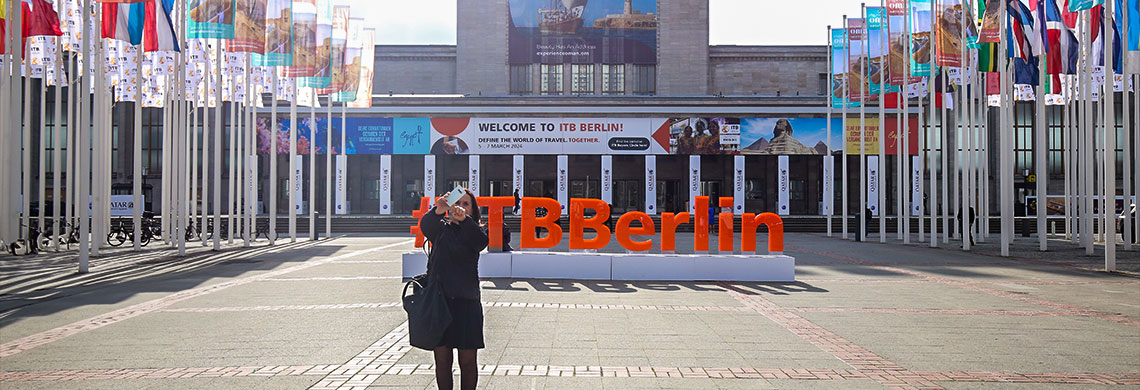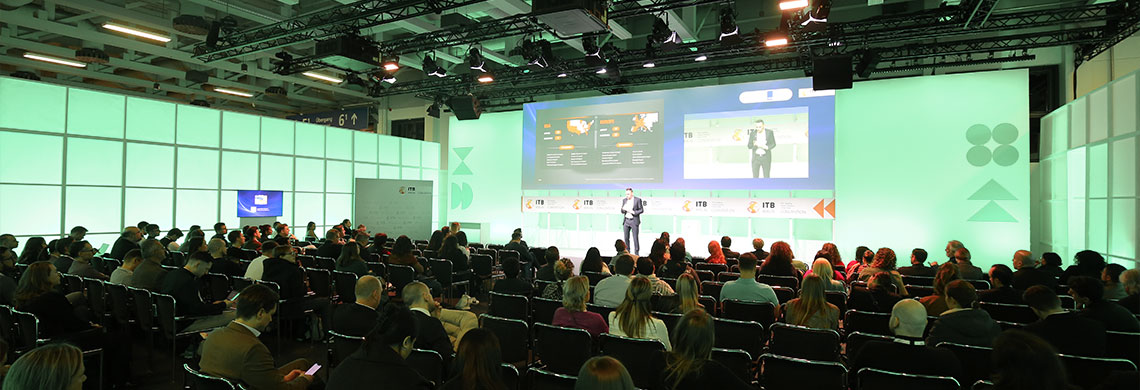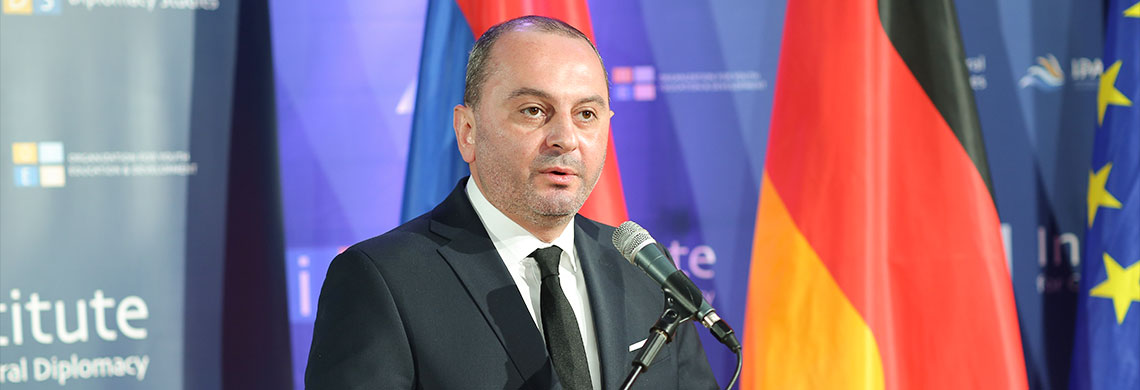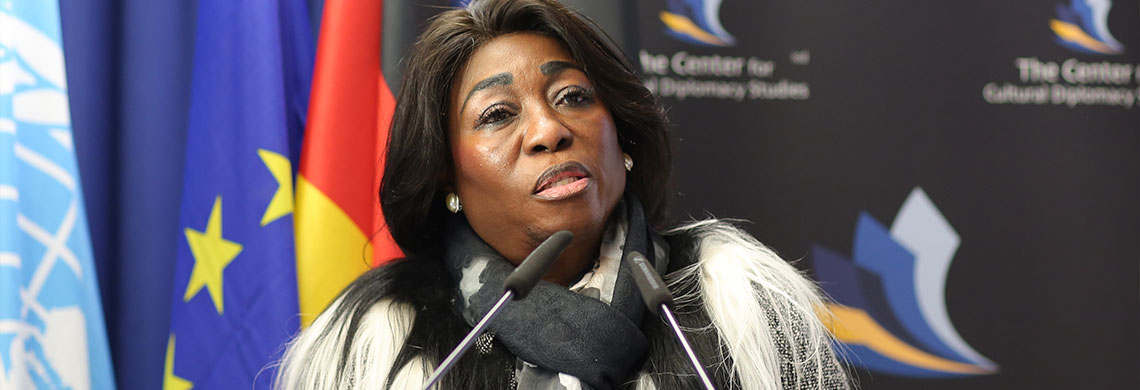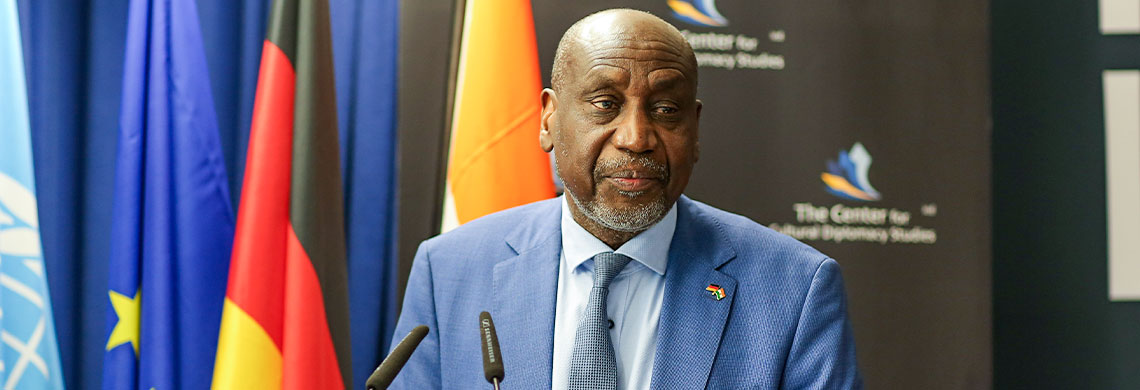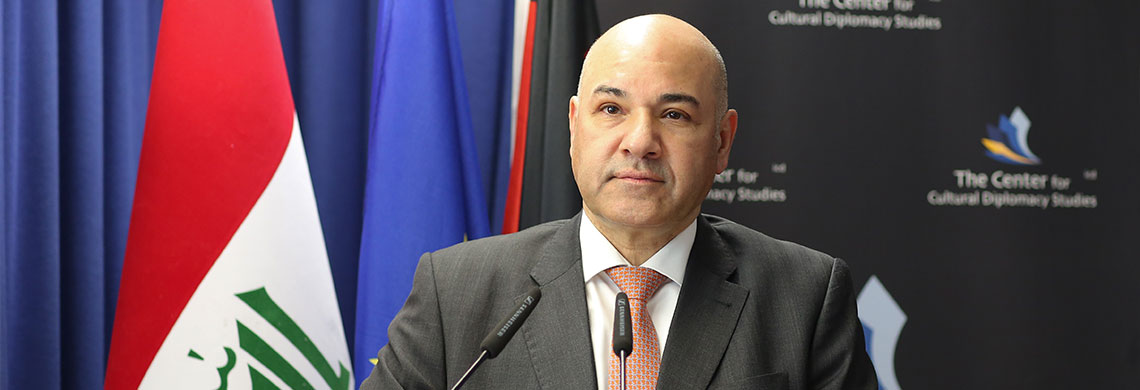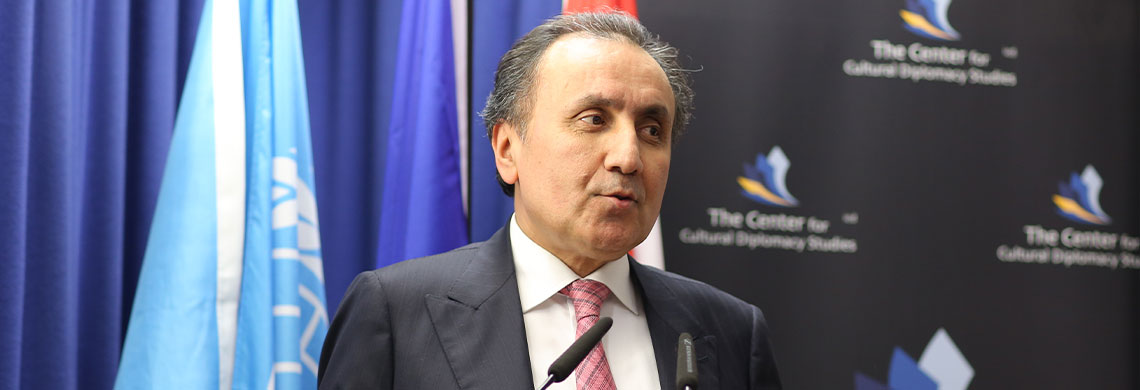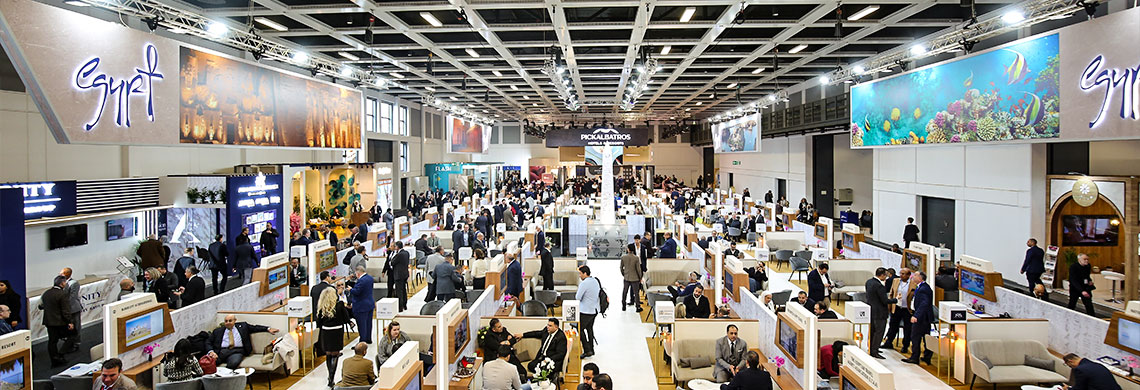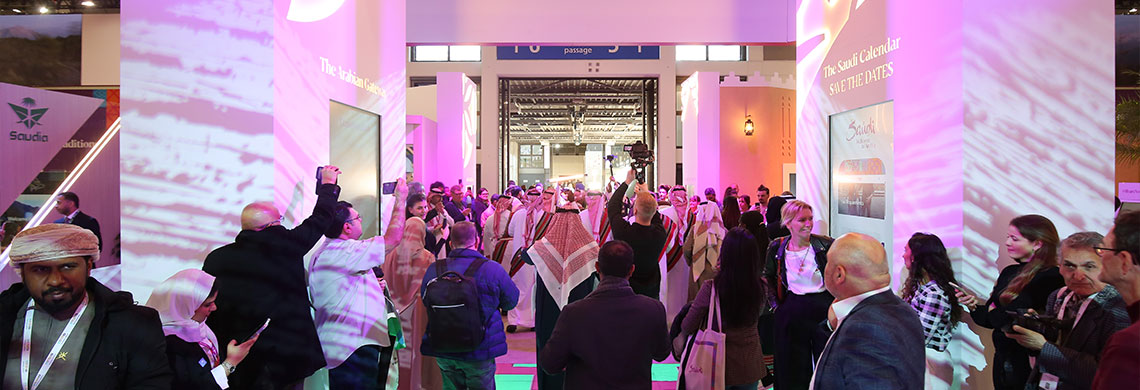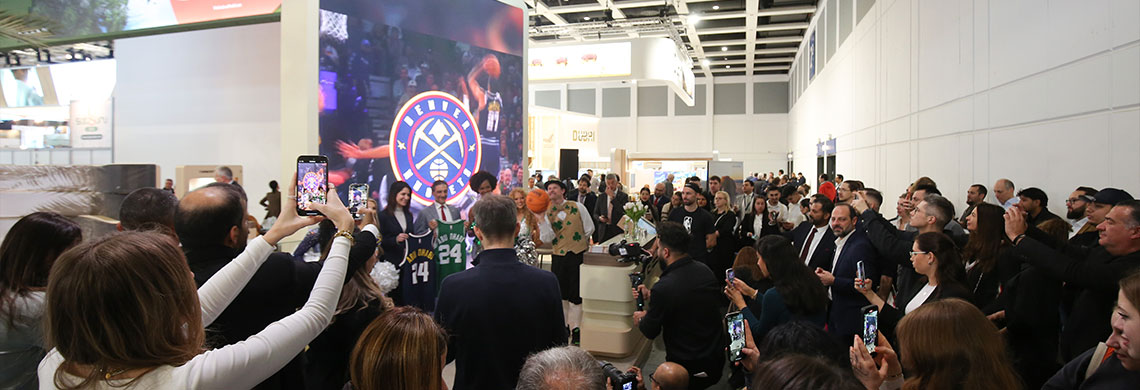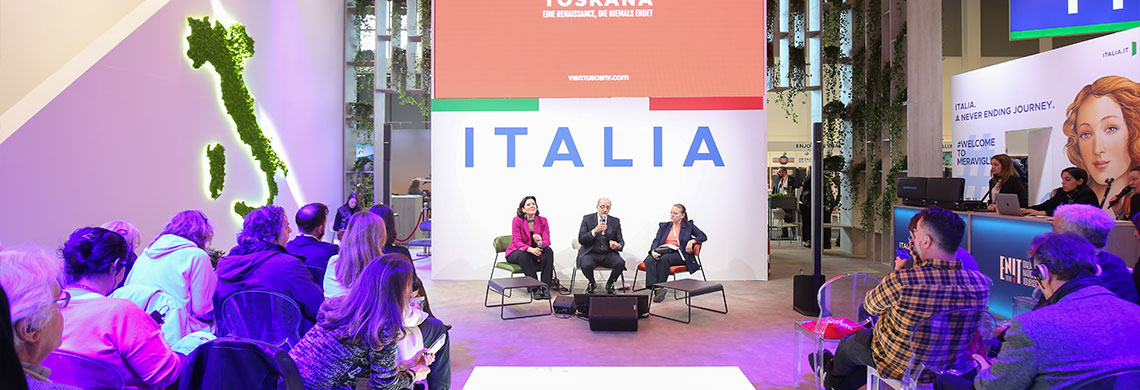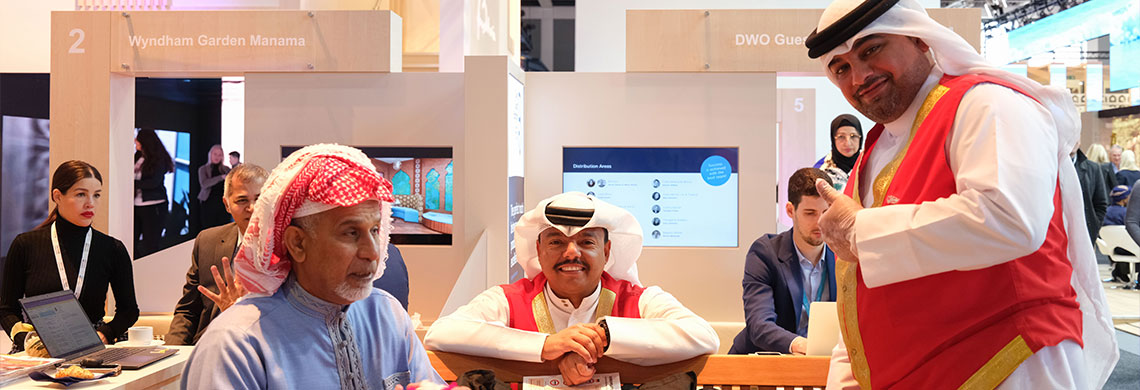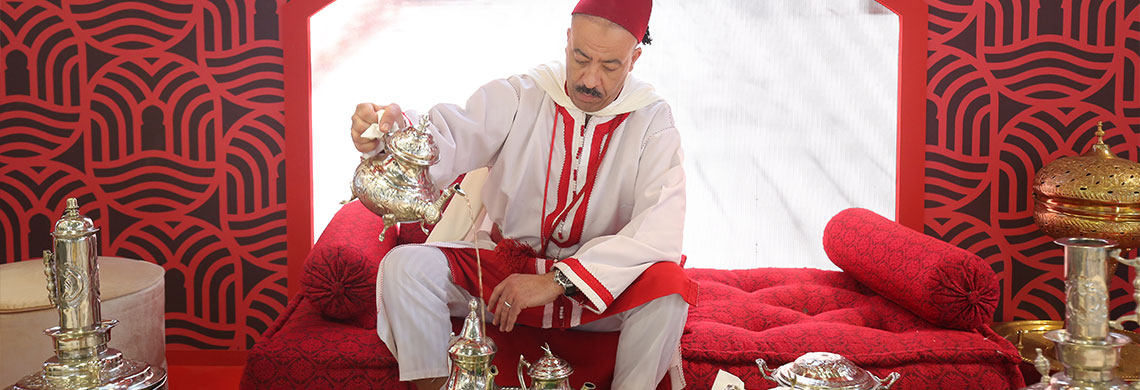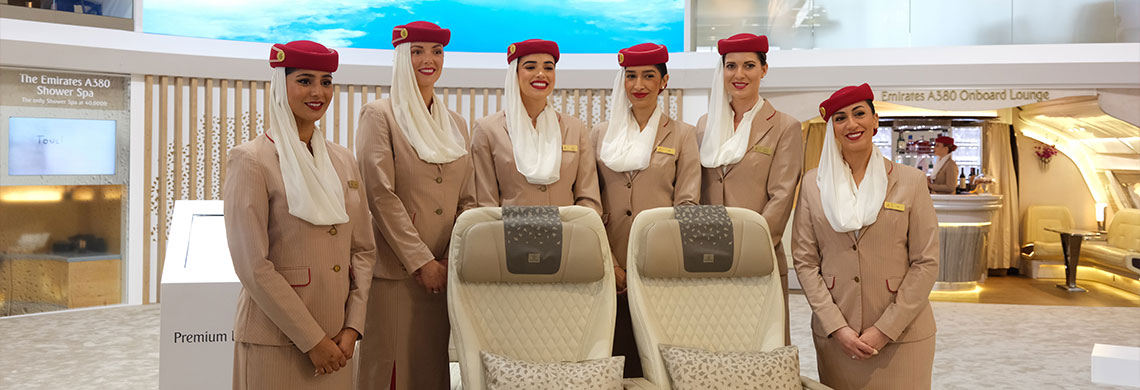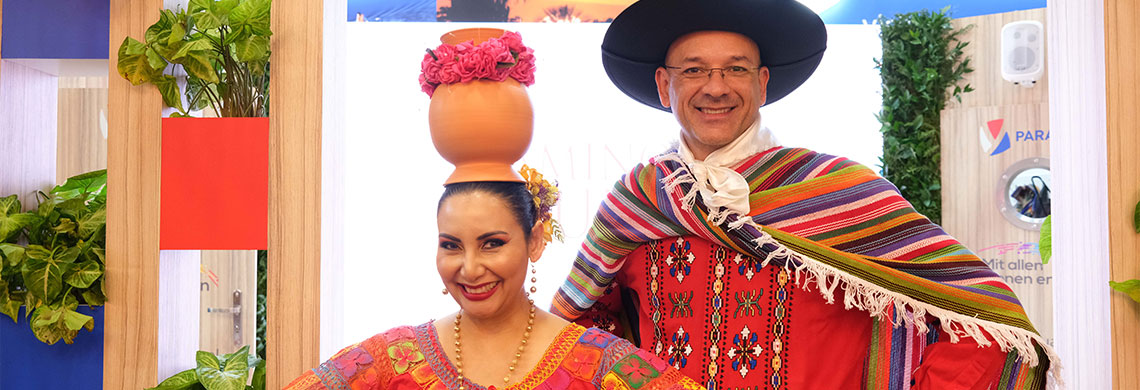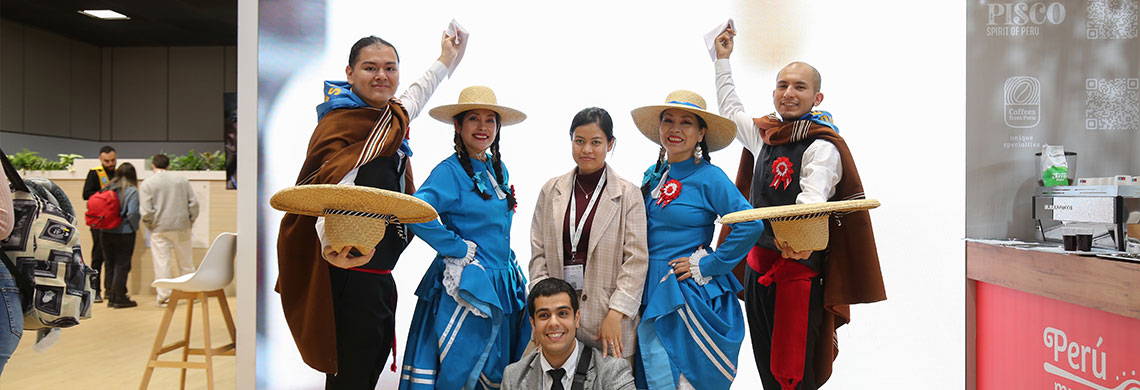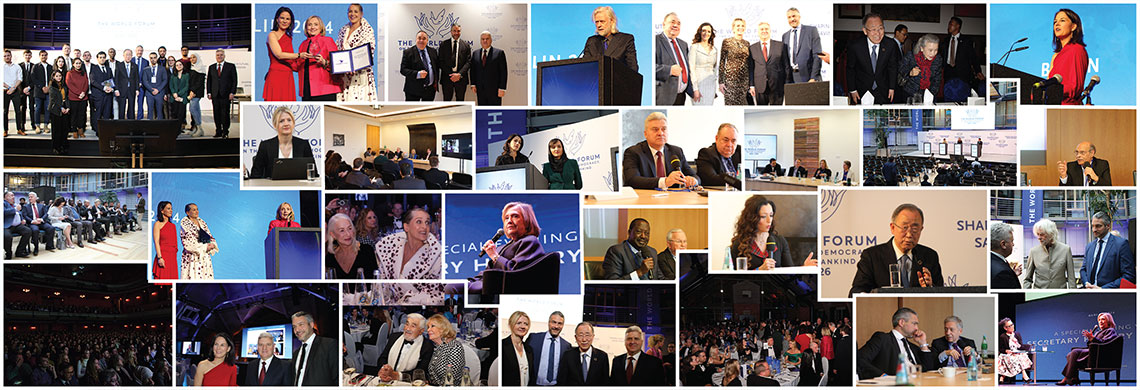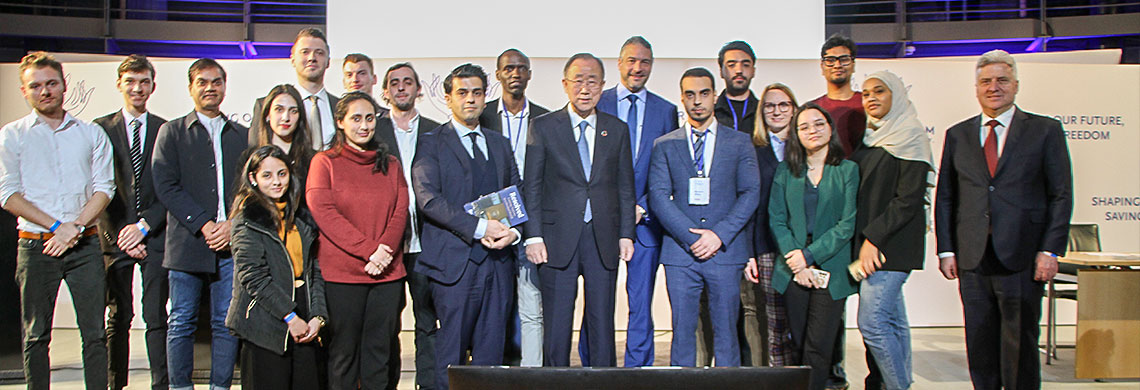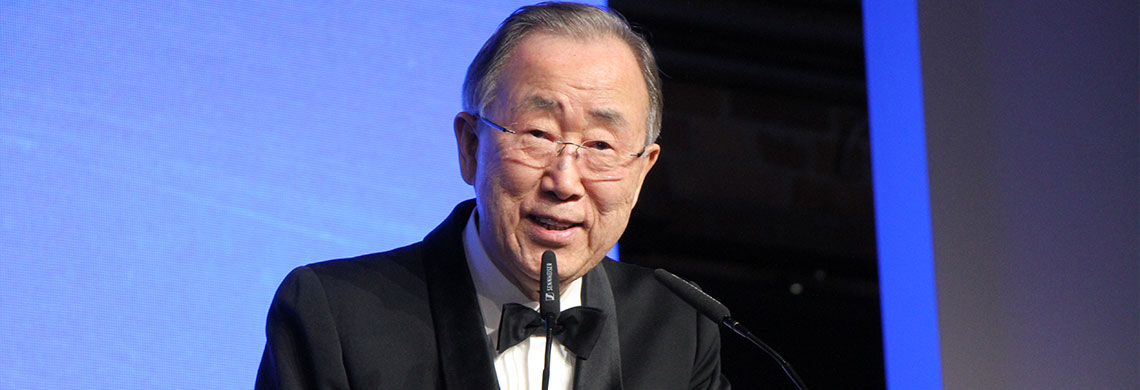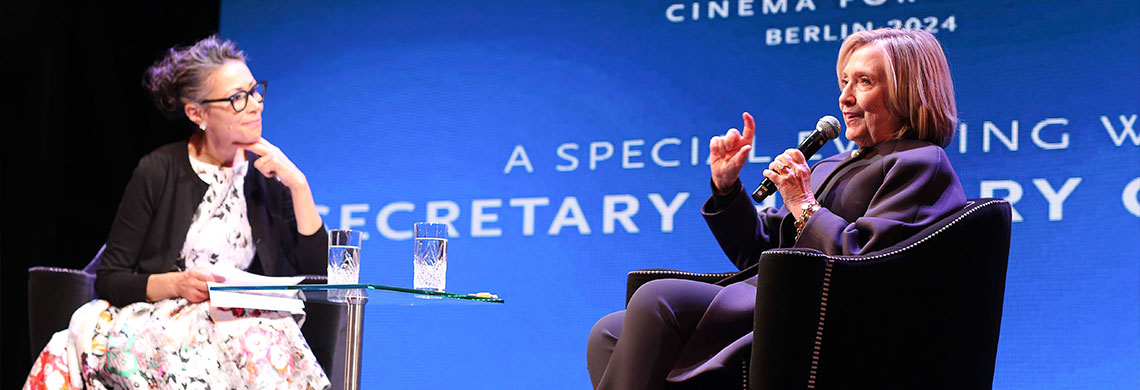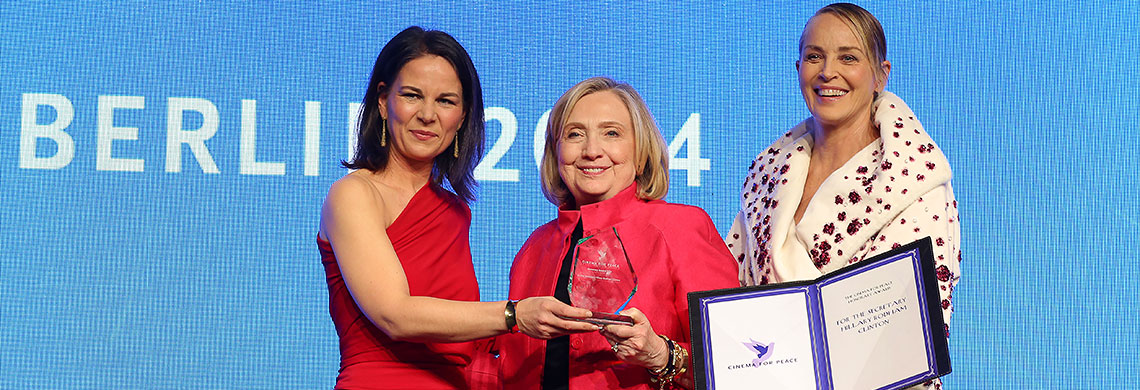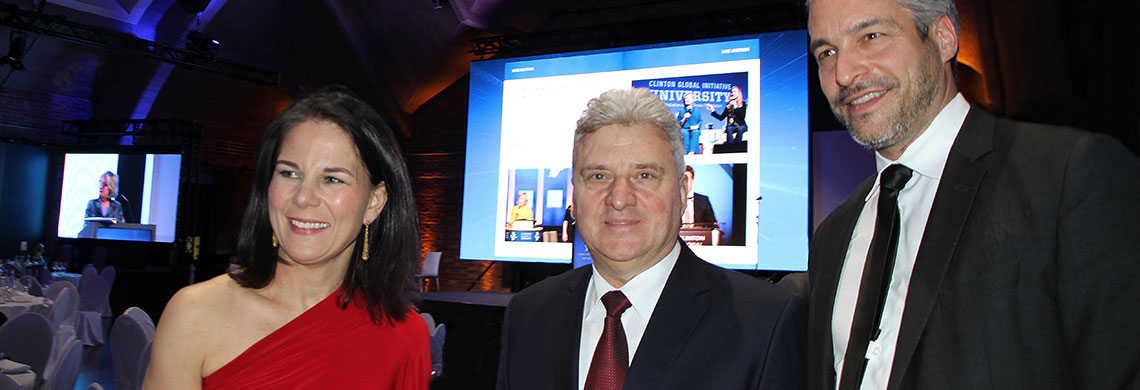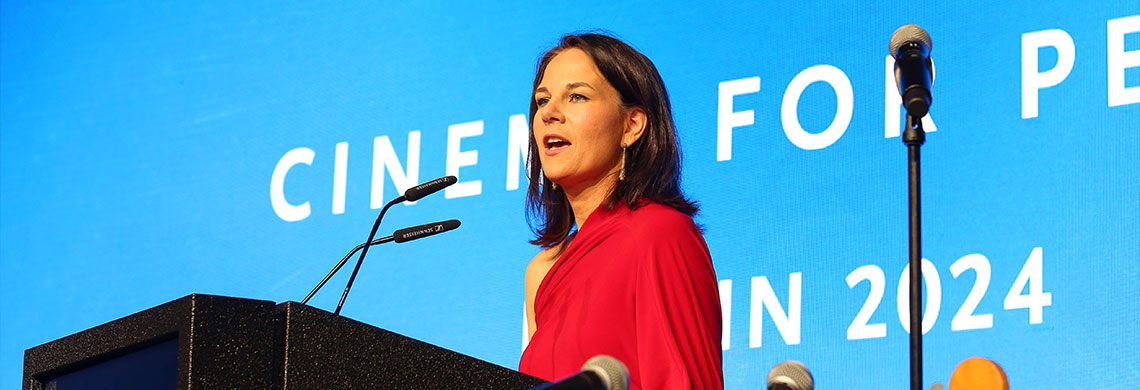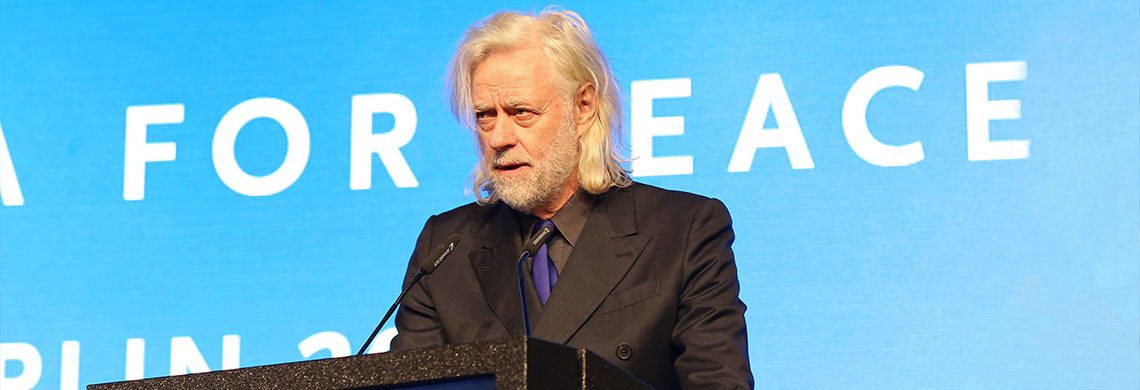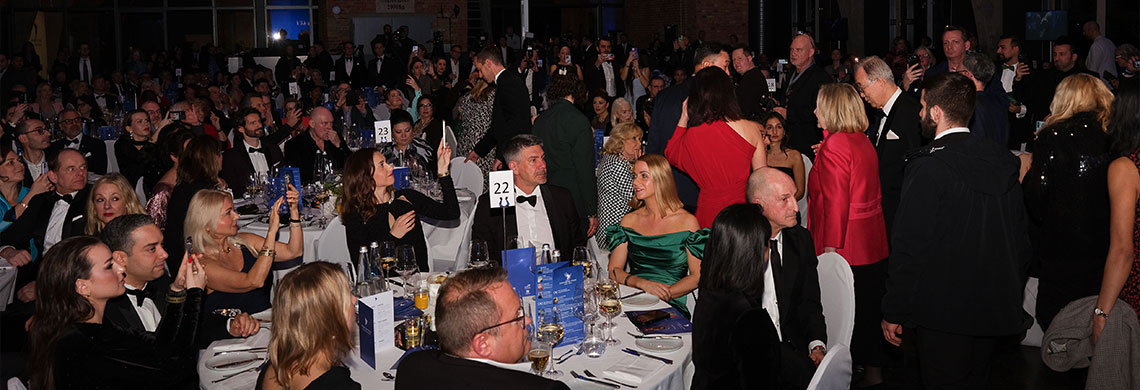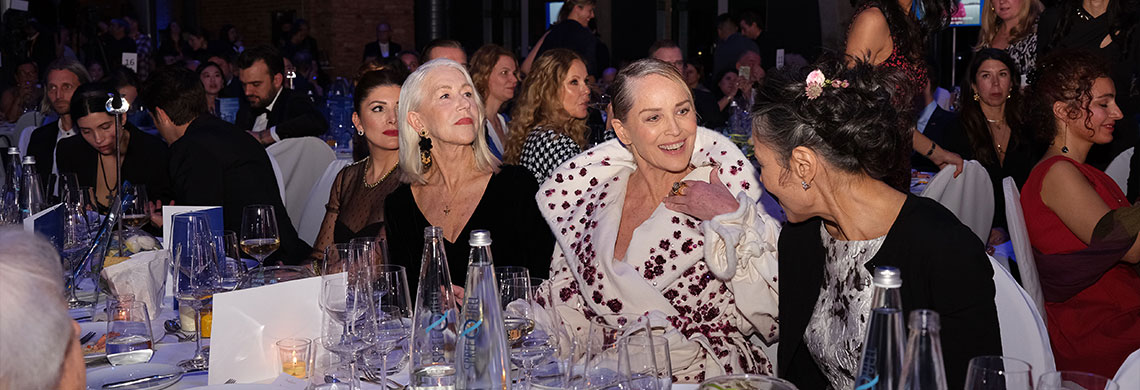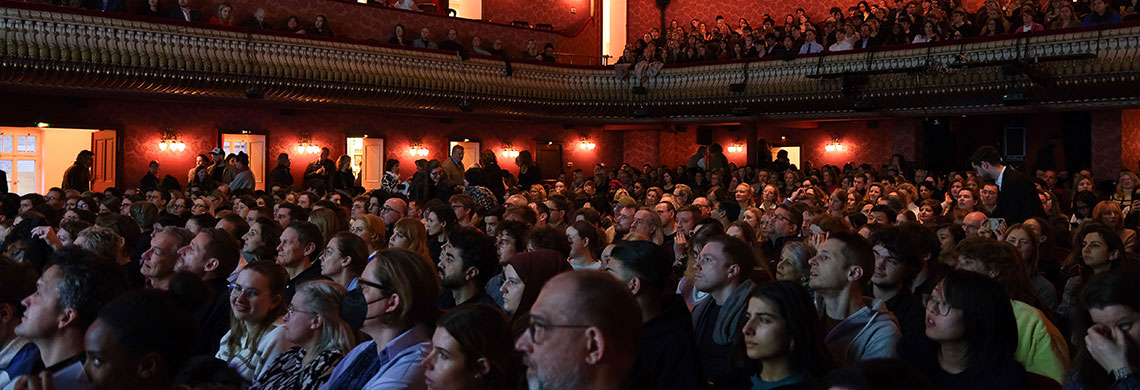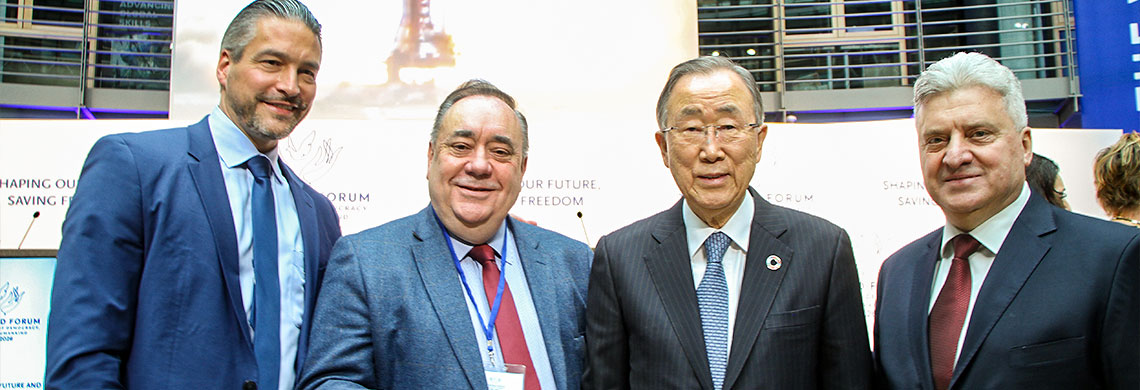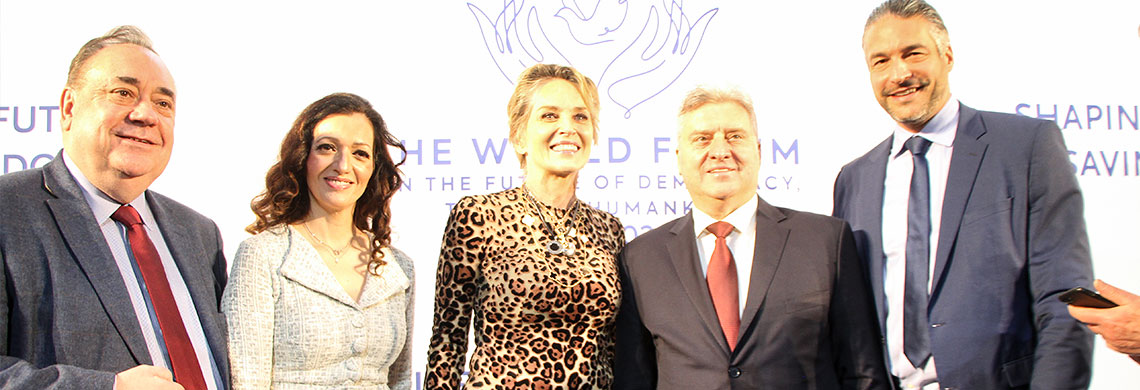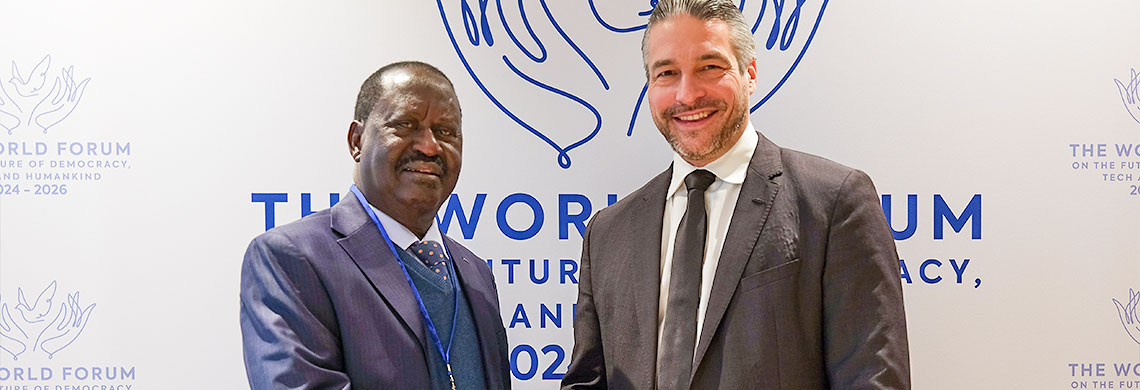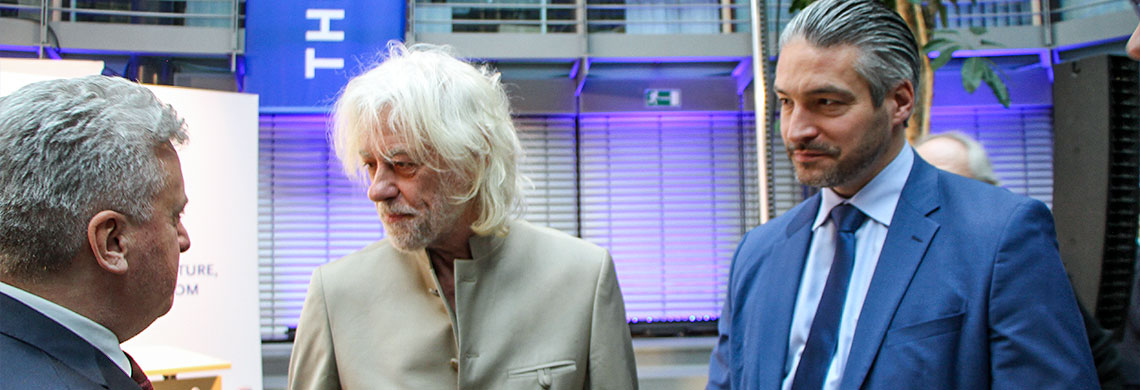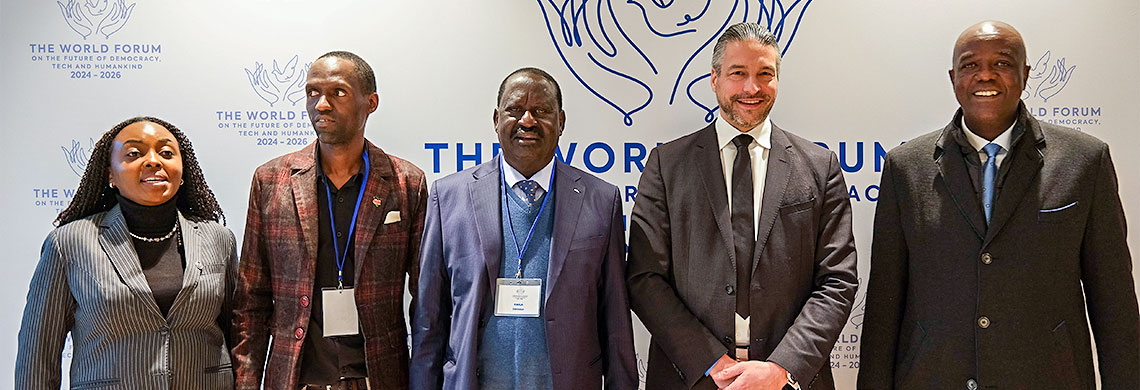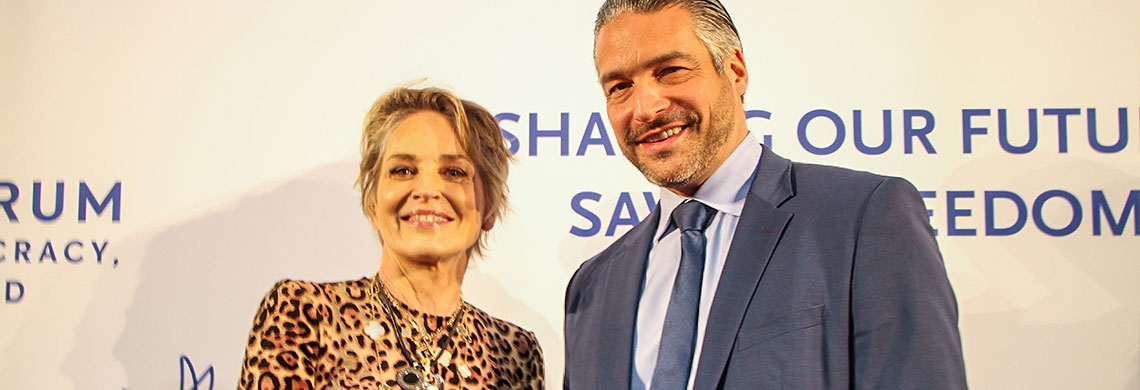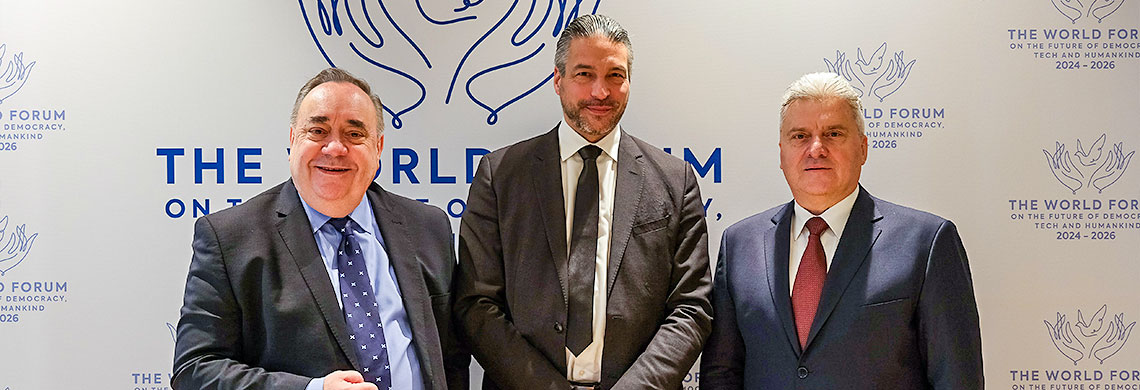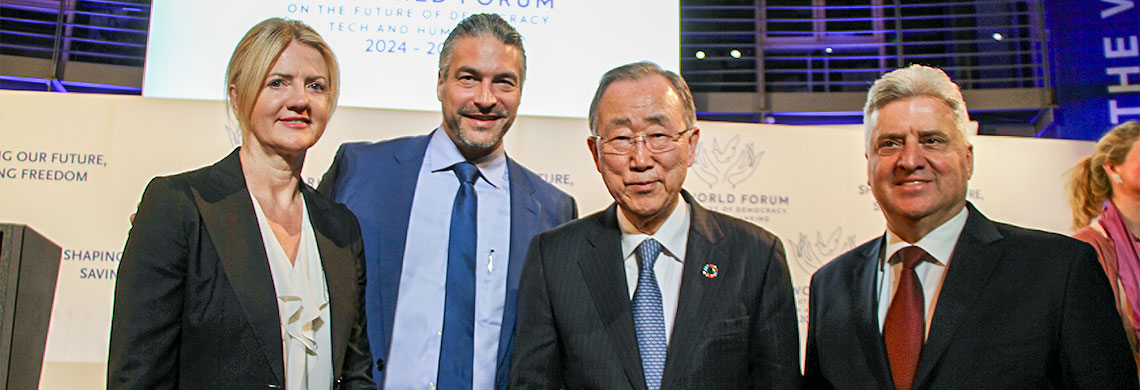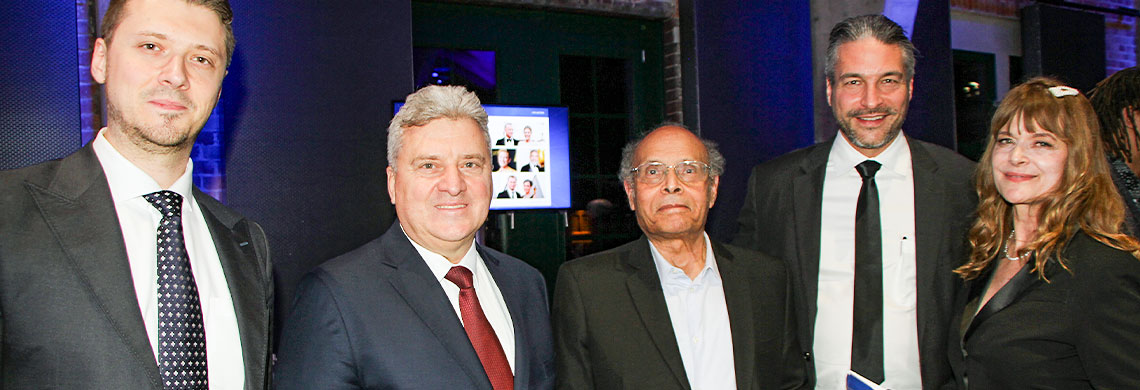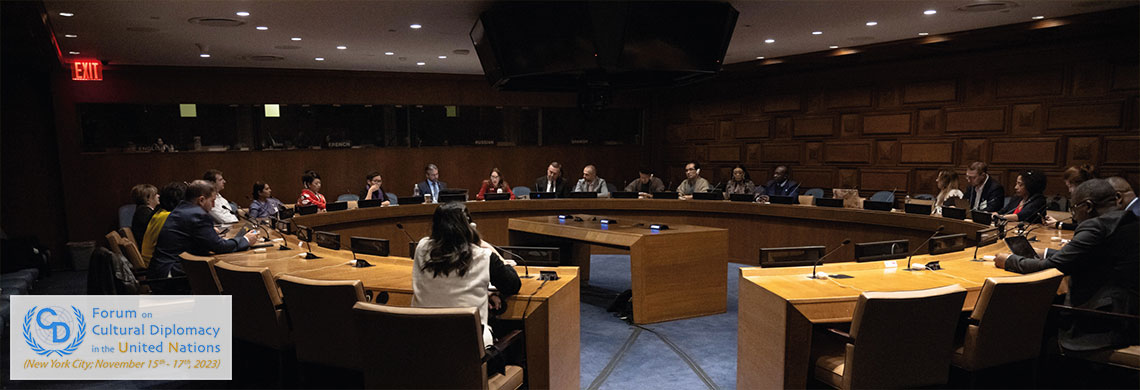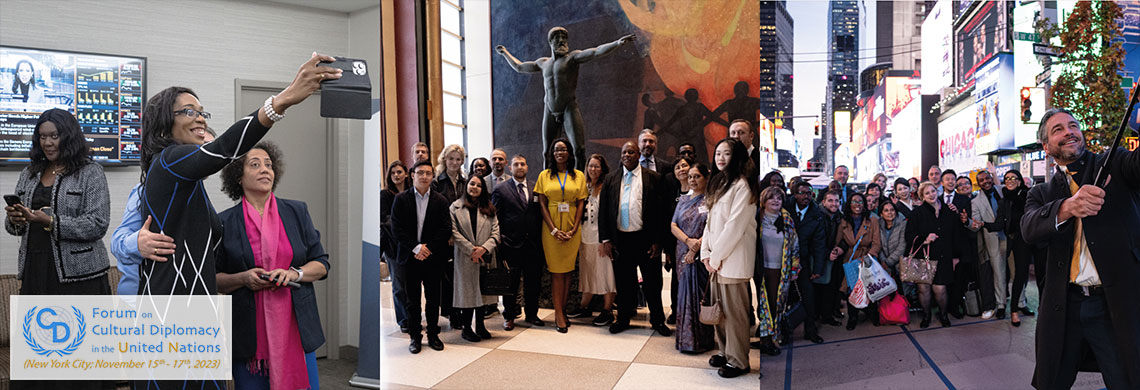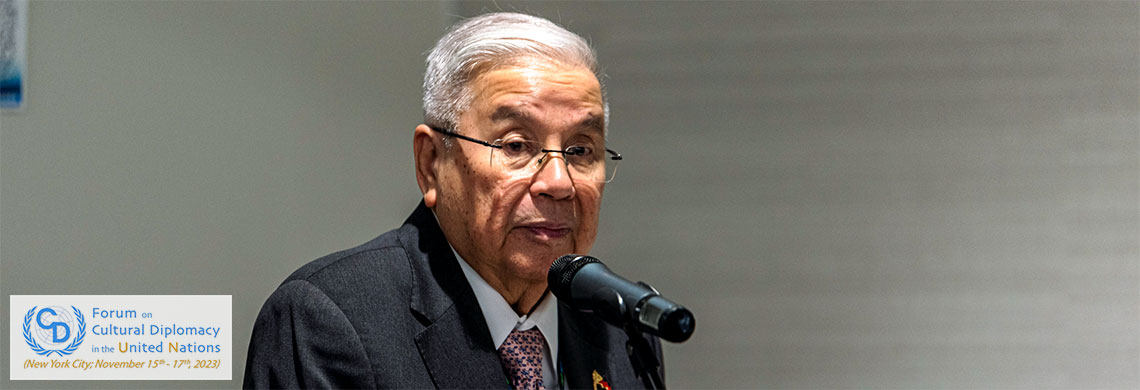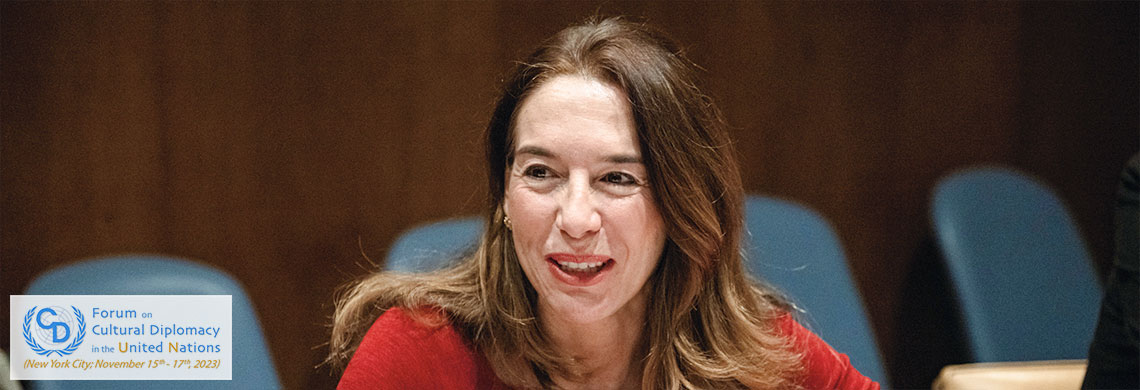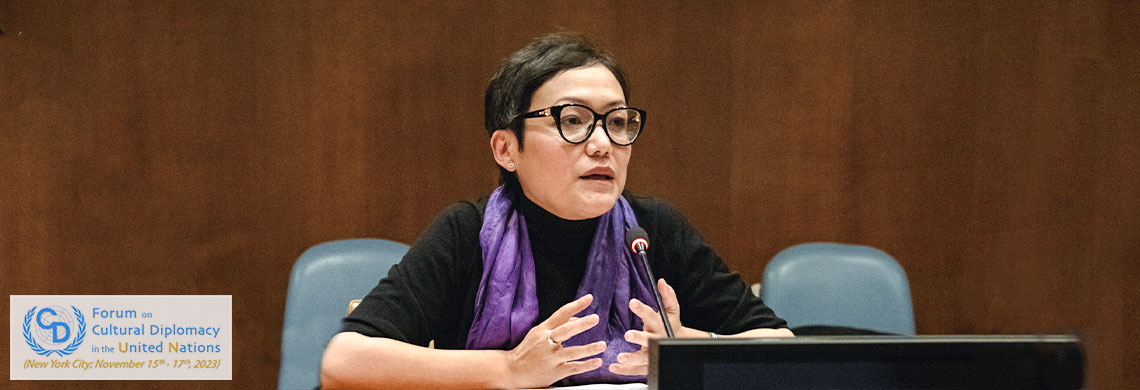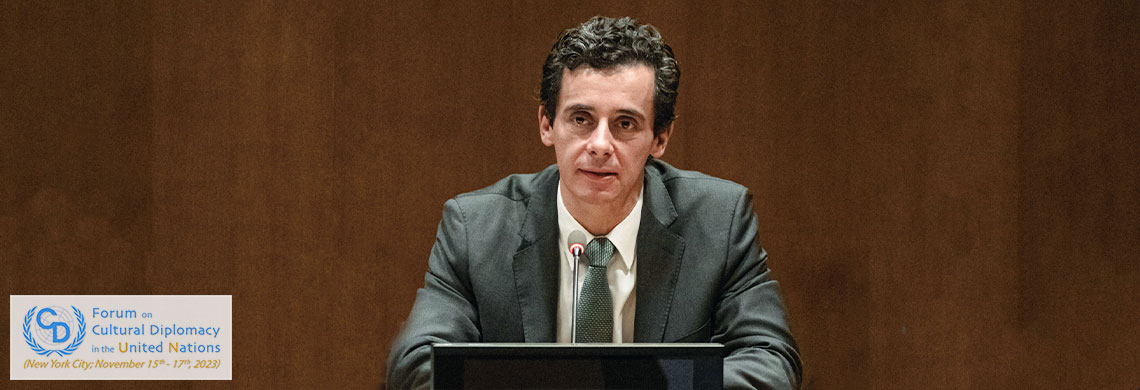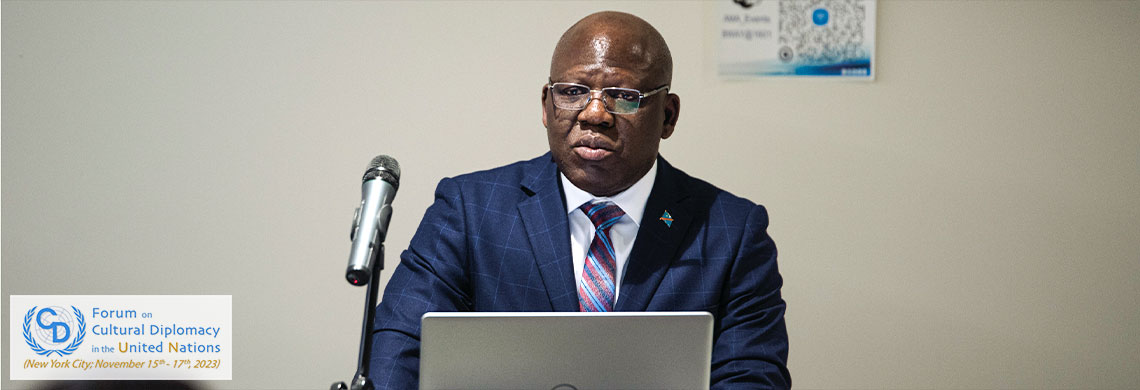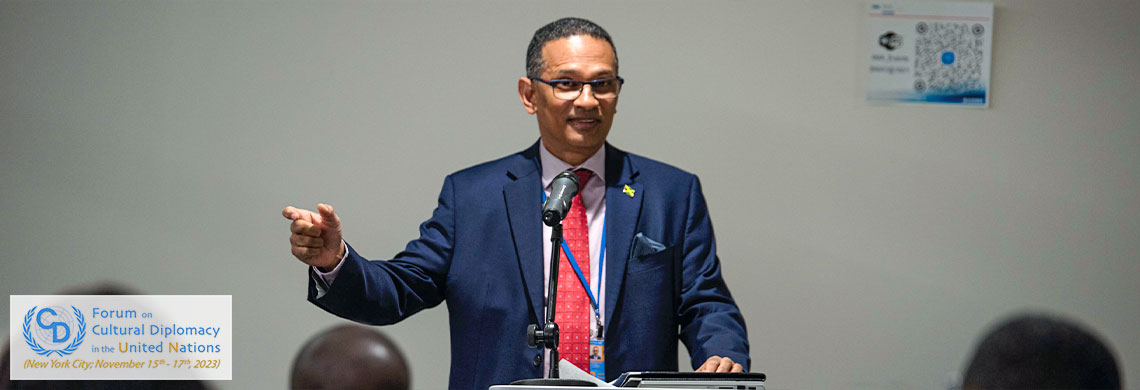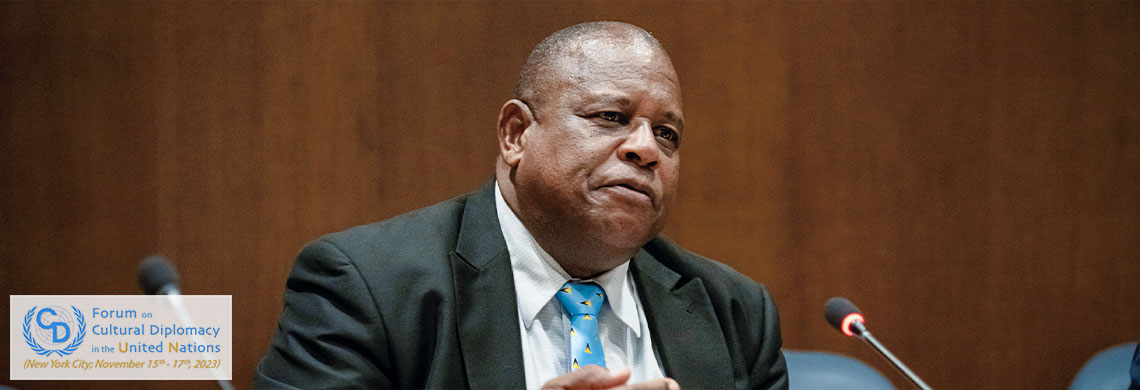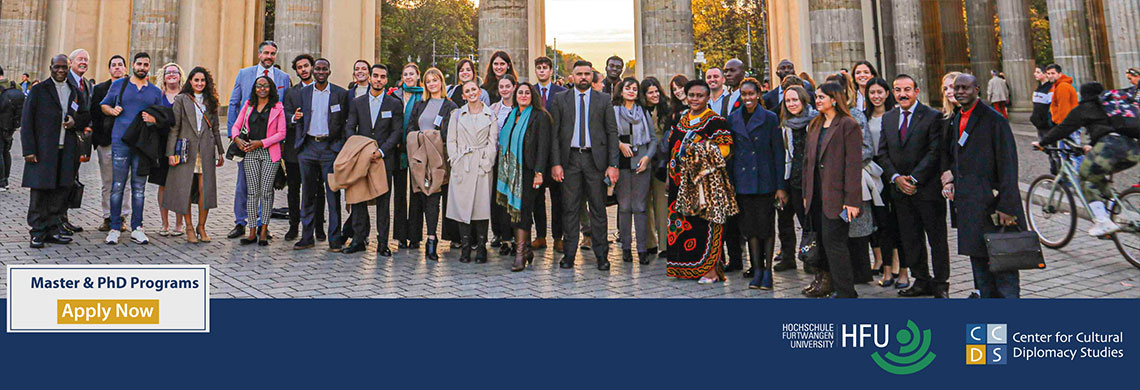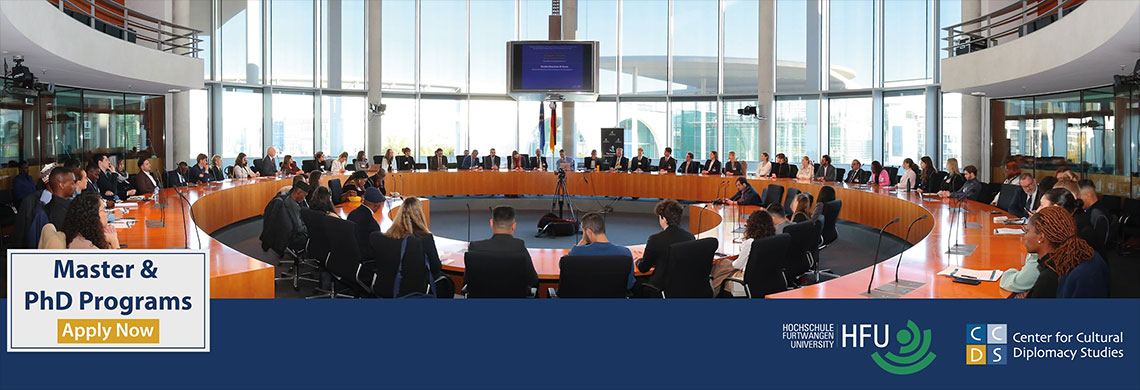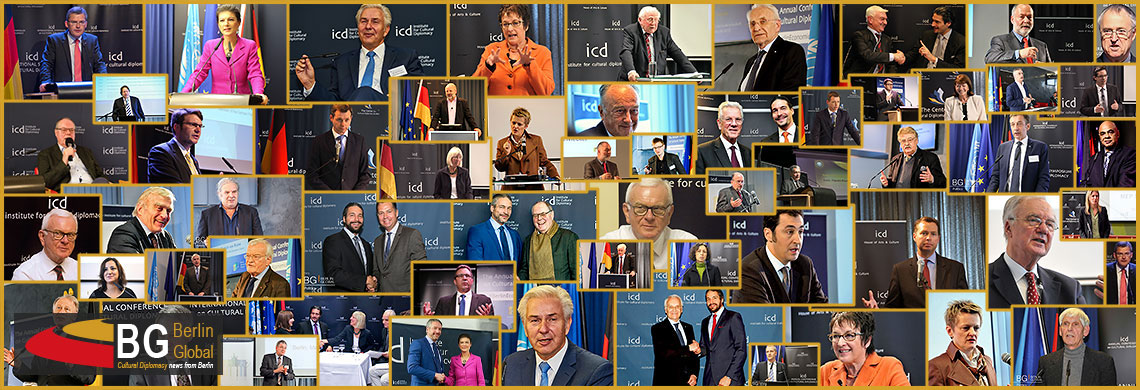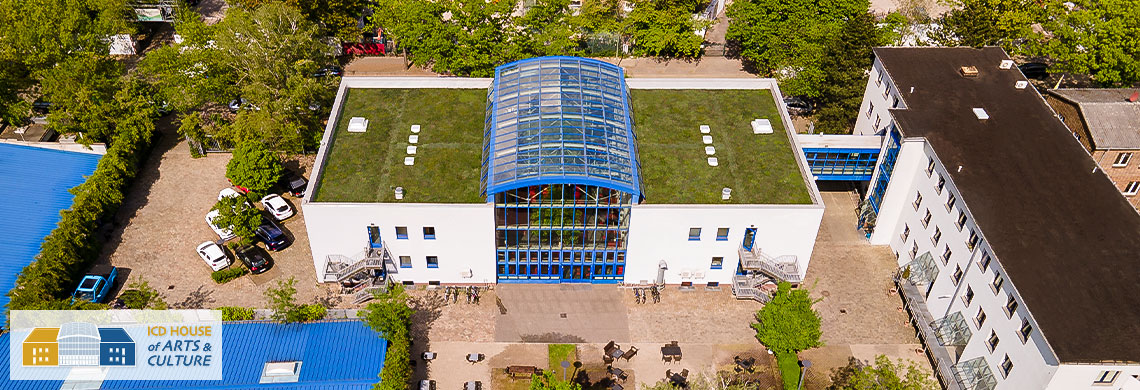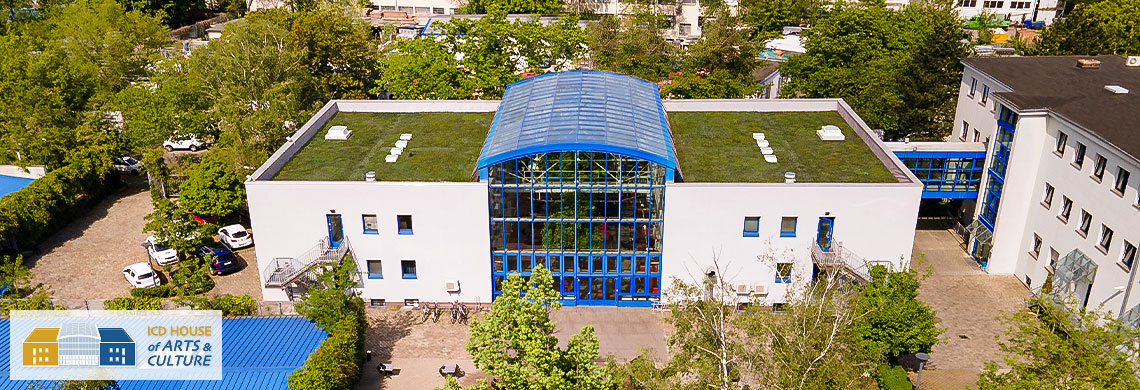Academy for Cultural Diplomacy
Cultural Diplomacy Research
Film as Cultural Diplomacy
Throughout the twentieth century and beyond, Film has served as one of the most influential and accessible mediums of cultural diplomacy and it has had a unique ability to effect "the masses” all around the world. In particular, certain films have succeeded at not only entertaining audiences, but have served as examples of films that have truly helped to educate, enhance and sustain relationships, to break stereotypes and transcend borders at a number of levels.Below you will find a selection of examples of such successful cultural diplomacy films that have had significant impacts or results in cultures and communities around the world:
-
1937
LA GRANDE ILLUSION
Humanist French Classic
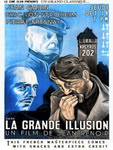 Jean Renoir’s humanist classic La Grande Illusion is a rarity: a film that is decidedly political, while managing to maintain a generosity of feeling. It is a film that is best described as ‘anti-war’ - hardly surprising, given that it was made on the eve of war and that its focus is on the worldwide conflict that preceded it. The film documents the experience of three French officers held as prisoners by the German forces during WW1: an aristocrat, de Boeldieu; a wealthy Jew, Rosenthal; and working-class, Maréchal. It insists on the necessity of cooperation between these disparate social classes, emphasising their shared purpose and humanity. Renoir imbues the film with a broad, generous view of what happens to human beings when they are changing, and the world is changing around them despite their best intentions to prevent it from doing so. Most importantly, the film’s message is that there is an innate goodness within man that allows us to act with decency and respect with all peoples. This, suggests Renoir, is something that has always transcended national boundaries and political divisions.
Jean Renoir’s humanist classic La Grande Illusion is a rarity: a film that is decidedly political, while managing to maintain a generosity of feeling. It is a film that is best described as ‘anti-war’ - hardly surprising, given that it was made on the eve of war and that its focus is on the worldwide conflict that preceded it. The film documents the experience of three French officers held as prisoners by the German forces during WW1: an aristocrat, de Boeldieu; a wealthy Jew, Rosenthal; and working-class, Maréchal. It insists on the necessity of cooperation between these disparate social classes, emphasising their shared purpose and humanity. Renoir imbues the film with a broad, generous view of what happens to human beings when they are changing, and the world is changing around them despite their best intentions to prevent it from doing so. Most importantly, the film’s message is that there is an innate goodness within man that allows us to act with decency and respect with all peoples. This, suggests Renoir, is something that has always transcended national boundaries and political divisions.

-
1939
GONE WITH THE WIND
HA Classic in the History of Cinema.
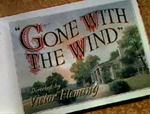 This movie tells the tale of a woman's life during one of the most tumultuous periods in American history. The film touches upon a number of themes: from her young, innocent days on a feudalistic plantation to the war-torn streets of Atlanta; to her first love to her third husband; from the lap of luxury to starvation and poverty; from innocence to an understanding of life.
This movie tells the tale of a woman's life during one of the most tumultuous periods in American history. The film touches upon a number of themes: from her young, innocent days on a feudalistic plantation to the war-torn streets of Atlanta; to her first love to her third husband; from the lap of luxury to starvation and poverty; from innocence to an understanding of life.
This film shows the best of the American cinema. Whether we like the film or not, one has to recognize the greatest achievement, perhaps, of the creative talent of the people working in the movie industry. Gone with the Wind represents a monumental leap in cinematic creation educating the audience on American history and identity.

-
1942
CASABLANCA
„Here’s looking at you, kid„
 Casablanca is a 1942 American romantic drama film directed by Michael Curtiz and based on Murray Burnett and Joan Alison's unproduced stage play Everybody Comes to Rick's. The film stars Humphrey Bogart, Ingrid Bergman, and Paul Henreid, and features Claude Rains, Conrad Veidt, Sydney Greenstreet, Peter Lorre, and Dooley Wilson. Set during the Second World War, it focuses on a man torn between, in the words of one character, "love and virtue". He must choose between his love for a woman and helping her Czech Resistance leader husband escape the Vichy-controlled Moroccan city Casablanca or continuing his fight against the Nazis.
Casablanca is a 1942 American romantic drama film directed by Michael Curtiz and based on Murray Burnett and Joan Alison's unproduced stage play Everybody Comes to Rick's. The film stars Humphrey Bogart, Ingrid Bergman, and Paul Henreid, and features Claude Rains, Conrad Veidt, Sydney Greenstreet, Peter Lorre, and Dooley Wilson. Set during the Second World War, it focuses on a man torn between, in the words of one character, "love and virtue". He must choose between his love for a woman and helping her Czech Resistance leader husband escape the Vichy-controlled Moroccan city Casablanca or continuing his fight against the Nazis.
The film has grown in popularity over the years. Murray Burnett called it „true yesterday, true today, true tomorrow". By 1955, the film had brought in $6.8 million, making it the third most successful of Warner’s wartime movies.

-
1947
FESTIVAL DE CANNES
International Film Festival Promoting International Cinema
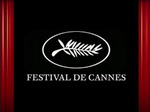 The Festival de Cannes, or Cannes International Film Festival, was founded in 1946, and is now considered as the most prestigious international film festival, taking place annually in Cannes, France. In the first edition, films from sixteen countries were presented. Crucially, from a Cultural Diplomacy standpoint, a policy of equality was introduced wherein the 16-strong jury would comprise only one representative from each country.
The Festival de Cannes, or Cannes International Film Festival, was founded in 1946, and is now considered as the most prestigious international film festival, taking place annually in Cannes, France. In the first edition, films from sixteen countries were presented. Crucially, from a Cultural Diplomacy standpoint, a policy of equality was introduced wherein the 16-strong jury would comprise only one representative from each country.

-
1956
THE TEAHOUSE OF AUGUST MOON
A glance at the struggle of Iranian people
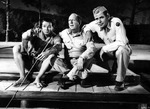 This American comedy ridicules the US occupation and Americanization of Okinawa following World War II. Captian Fisby is sent to Okinawa with the mandate of teaching democracy in the region. In an attempt to implement this, he encourages the locals to build a school. However, the villagers instead decide to build a teahouse. When the Colonel arrives in Okinawa to check on the democratization progress, he orders for the teahouse to be destroyed. In an ironic twist, the village is chosen by the Supreme Commander as a model for American-led democratization and the teahouse is to be rebuilt.
This American comedy ridicules the US occupation and Americanization of Okinawa following World War II. Captian Fisby is sent to Okinawa with the mandate of teaching democracy in the region. In an attempt to implement this, he encourages the locals to build a school. However, the villagers instead decide to build a teahouse. When the Colonel arrives in Okinawa to check on the democratization progress, he orders for the teahouse to be destroyed. In an ironic twist, the village is chosen by the Supreme Commander as a model for American-led democratization and the teahouse is to be rebuilt.

-
1956
THE KING AND I
A mix of modern and ancient international traditions
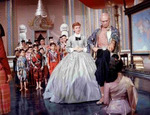 The movie is based on the story of Anna Leonowens, who moves from Wales to Thailand in order to become a tutor for the children of King Mongkut of Sian in the early 1960s. King Mongkut becomes wary about reports of English imperialism and the British view of him as a barbaric leader. The cultural differences cause a rift between the King and Anna however despite this they learn to accept each other and Anna falls in love with the King.
The movie is based on the story of Anna Leonowens, who moves from Wales to Thailand in order to become a tutor for the children of King Mongkut of Sian in the early 1960s. King Mongkut becomes wary about reports of English imperialism and the British view of him as a barbaric leader. The cultural differences cause a rift between the King and Anna however despite this they learn to accept each other and Anna falls in love with the King.
This movie demonstrates a gradual dissolution of cultural differences and learning from each other’s customs and traditions. The King learns more about the modern Western world, whilst Anna begins to understand the importance of the King’s role in upholding oriental customs. Thus, this prompts the audience to contemplate the mix of modern and ancient traditions.

-
1959
HIROSHIMA MON AMOUR
Understanding the concept of memory in disparate cultures
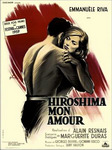 Hiroshima Mon Amour, a screenplay written by Marguerite Duras and directed by Alain Resnais, was the recipient of the Special Jury Prize at the Cannes Film Festival in 1959, and served as a major catalyst for the Nouvelle Vague (French New Wave) cinematic movement. The film centres on an affair between a Japanese architect and a French actress filming in Hiroshima, and explores different cultures and the difficulty we sometimes experience in attempting to reconcile our understanding of memory and history with disparate cultures. Resnais uses the fictional situation of the two lovers to critique the impossibility of truly knowing an Other; the backdrop of the atom bomb being dropped on Hiroshima underlines the disparity between Western and Japanese recollections of the atrocity. The film explores the universal themes of love, war, and culture, but should be viewed as a plea for peace and the abolition of warfare. As such, it demonstrates the importance of international cooperation, showing the dangers of what can happen when socio-cultural conflicts are allowed to develop and mutate.
Hiroshima Mon Amour, a screenplay written by Marguerite Duras and directed by Alain Resnais, was the recipient of the Special Jury Prize at the Cannes Film Festival in 1959, and served as a major catalyst for the Nouvelle Vague (French New Wave) cinematic movement. The film centres on an affair between a Japanese architect and a French actress filming in Hiroshima, and explores different cultures and the difficulty we sometimes experience in attempting to reconcile our understanding of memory and history with disparate cultures. Resnais uses the fictional situation of the two lovers to critique the impossibility of truly knowing an Other; the backdrop of the atom bomb being dropped on Hiroshima underlines the disparity between Western and Japanese recollections of the atrocity. The film explores the universal themes of love, war, and culture, but should be viewed as a plea for peace and the abolition of warfare. As such, it demonstrates the importance of international cooperation, showing the dangers of what can happen when socio-cultural conflicts are allowed to develop and mutate.

-
1964
DR. STRANGELOVE
Timeless political satire
 Stanley Kubrick’s Dr. Strangelove, or How I Learned to Stop Worrying and Love the Bomb, is rightly considered amongst the best comedies in the history of the silver screen. Coming in the midst of the Cold War, and released a year before the inception of the conflict in Vietnam, the film’s unrelenting satire contains a visceral message that is deeply serious and perceptive with regards to the mad military mindset of the time. In the US, there was a widespread belief that the Soviet Communists were attempting to poison the water supply with fluoride, and the film pours scorn on this idea. Instead, it seeks (successfully) to examine, and ridicule, the militarized approach to international relations that was prevalent in the US at the time - due in part to the assassination of John F. Kennedy - as well as the unquestioned validity of this approach. Despite the bold satire that underscores the entire narrative, the message advocated by Kubrick is quite clear: warfare should be viewed as a last resort. In its place, Kubrick seems to suggest that a policy of diplomatic cooperation would better serve the individual and collective interests of all parties.
Stanley Kubrick’s Dr. Strangelove, or How I Learned to Stop Worrying and Love the Bomb, is rightly considered amongst the best comedies in the history of the silver screen. Coming in the midst of the Cold War, and released a year before the inception of the conflict in Vietnam, the film’s unrelenting satire contains a visceral message that is deeply serious and perceptive with regards to the mad military mindset of the time. In the US, there was a widespread belief that the Soviet Communists were attempting to poison the water supply with fluoride, and the film pours scorn on this idea. Instead, it seeks (successfully) to examine, and ridicule, the militarized approach to international relations that was prevalent in the US at the time - due in part to the assassination of John F. Kennedy - as well as the unquestioned validity of this approach. Despite the bold satire that underscores the entire narrative, the message advocated by Kubrick is quite clear: warfare should be viewed as a last resort. In its place, Kubrick seems to suggest that a policy of diplomatic cooperation would better serve the individual and collective interests of all parties.

-
1973
ENTER THE DRAGON
Globalizing martial arts
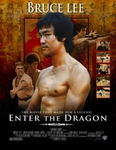 Enter The Dragon, considered to be one of the greatest martial arts films of all time, was the first Chinese martial arts film to be produced by a major Hollywood studio (it was produced in association with Bruce Lee’s Concord Production Company). Grossing more than 200 million dollars worldwide, Enter The Dragon was deemed to be ‘culturally significant’ in the U.S.A and was thus selected for preservation in the National Film Registry. Lee used the film as a vehicle for expressing the beauty of Chinese culture, language, food, dress, and history. Lee managed to depict Chinese culture and tradition while endearing himself to a Westernized public; he harmonized Oriental and Western culture in order to create and portray values that could be appreciated across the world. The film’s impact on global culture was far-reaching: it greatly influenced the globalization of martial arts, to the extent that Oriental martial arts is now viewed as a mainstream sporting activities in the Olympic and Commonwealth Games, two of the bastions of Cultural Diplomacy in the sporting world.
Enter The Dragon, considered to be one of the greatest martial arts films of all time, was the first Chinese martial arts film to be produced by a major Hollywood studio (it was produced in association with Bruce Lee’s Concord Production Company). Grossing more than 200 million dollars worldwide, Enter The Dragon was deemed to be ‘culturally significant’ in the U.S.A and was thus selected for preservation in the National Film Registry. Lee used the film as a vehicle for expressing the beauty of Chinese culture, language, food, dress, and history. Lee managed to depict Chinese culture and tradition while endearing himself to a Westernized public; he harmonized Oriental and Western culture in order to create and portray values that could be appreciated across the world. The film’s impact on global culture was far-reaching: it greatly influenced the globalization of martial arts, to the extent that Oriental martial arts is now viewed as a mainstream sporting activities in the Olympic and Commonwealth Games, two of the bastions of Cultural Diplomacy in the sporting world.

-
1986
GUNG HO
Love goes beyond cultural differences
 In the moment when an automobile-assembly factory in Pennsylvania is bought by a Japanese auto firm, the American workers have to start dealing with the newly imported Japanese business culture. Workers are resentful of the new highly demanding management, but with time they begin to understand the peculiar sense of humor of the Japanese boss. In an attempt to examine the cultural clash that results from international business operations, the director aims to express that intercultural management may be conflictive at first, but with time, an intercultural understanding can develop that will allow for operations to function smoothly and efficiently.
In the moment when an automobile-assembly factory in Pennsylvania is bought by a Japanese auto firm, the American workers have to start dealing with the newly imported Japanese business culture. Workers are resentful of the new highly demanding management, but with time they begin to understand the peculiar sense of humor of the Japanese boss. In an attempt to examine the cultural clash that results from international business operations, the director aims to express that intercultural management may be conflictive at first, but with time, an intercultural understanding can develop that will allow for operations to function smoothly and efficiently.

-
1986
A GREAT WALL
The cultural difficulties of reuniting with family
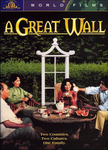 This comedy looks into the life of Leo Fang, who immigrated to the US when he was ten years old, but returns to China with his wife and son to spend the summer with his family in Beijing. The film explores the challenges that Leo faces in communicating, both linguistically and culturally, with his family. What is most interesting about this film is to witness Leo’s adjustment to the Chinese culture that he had left long ago. His brother-in-law’s distrust of American culture provides an interesting insight into cultural differences. Despite being ostensibly a comedy, the film touches upon a variety of serious cross-cultural issues, such as discrimination in the American workplace, interracial dating, and the Asian-American identity.
This comedy looks into the life of Leo Fang, who immigrated to the US when he was ten years old, but returns to China with his wife and son to spend the summer with his family in Beijing. The film explores the challenges that Leo faces in communicating, both linguistically and culturally, with his family. What is most interesting about this film is to witness Leo’s adjustment to the Chinese culture that he had left long ago. His brother-in-law’s distrust of American culture provides an interesting insight into cultural differences. Despite being ostensibly a comedy, the film touches upon a variety of serious cross-cultural issues, such as discrimination in the American workplace, interracial dating, and the Asian-American identity.

-
1987
BLUE COLLAR AND BUDDHA
Exploring the dilemma of a community of Laotian refugees
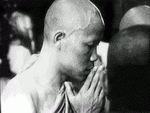 This cultural documentary focuses on a community of Laotian refugees who struggle to preserve their cultural identity while adapting to a new American lifestyle. The Laotians are subject to bullying and hatred in their new home of Rockford, Illinois. Building a Buddhist temple leads to acts of terrorism against their community. The refugees have no choice but to stay in Rockford in order to make a better life for their children, yet the cultural misunderstandings between the residents of Rockford and the Laotians renders their collective experience increasingly tough.
This cultural documentary focuses on a community of Laotian refugees who struggle to preserve their cultural identity while adapting to a new American lifestyle. The Laotians are subject to bullying and hatred in their new home of Rockford, Illinois. Building a Buddhist temple leads to acts of terrorism against their community. The refugees have no choice but to stay in Rockford in order to make a better life for their children, yet the cultural misunderstandings between the residents of Rockford and the Laotians renders their collective experience increasingly tough.

-
1992
PAN-AFRICAN FILM FESTIVAL
First International Black Film Festival
 Pan-Africanism is an ideal; a state of mind,; and in certain cases, a religion. Throughout history, African leaders and intellectuals have dreamed of uniting people of African descent all around the world. After the African Union was created - with a focus on stronger international relations within the African continent and outside - the Pan-African film festival was created with the same ethos in 1992 in Los Angeles. The festival collects, presents, and showcases a broad spectrum of Black creative works, aiming to promote „cultural understanding among people of African descent„. Every year the PAFF showcases over one hundred and fifty new films and over one hundred artists.
Pan-Africanism is an ideal; a state of mind,; and in certain cases, a religion. Throughout history, African leaders and intellectuals have dreamed of uniting people of African descent all around the world. After the African Union was created - with a focus on stronger international relations within the African continent and outside - the Pan-African film festival was created with the same ethos in 1992 in Los Angeles. The festival collects, presents, and showcases a broad spectrum of Black creative works, aiming to promote „cultural understanding among people of African descent„. Every year the PAFF showcases over one hundred and fifty new films and over one hundred artists.

-
1993
COOL RUNNINGS
A comedy about sportsmanship and the international nature of competition
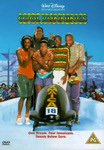 Sportsmanship is a form of cultural diplomacy: respect for another team or culture conveys a sense of fellowship that transcends the natural feeling of competition. Cool Runnings narrates the true story of four Jamaican athletes and a retired American bobsled coach who attempt to compete at the Winter Olympics against all odds - the four had never even seen snow prior to the event! Despite the difficulties, they manage to qualify, giving the world the first Jamaican bobsled team. The team are initially a laughing stock, but become well respected for their determination and spirit.
Sportsmanship is a form of cultural diplomacy: respect for another team or culture conveys a sense of fellowship that transcends the natural feeling of competition. Cool Runnings narrates the true story of four Jamaican athletes and a retired American bobsled coach who attempt to compete at the Winter Olympics against all odds - the four had never even seen snow prior to the event! Despite the difficulties, they manage to qualify, giving the world the first Jamaican bobsled team. The team are initially a laughing stock, but become well respected for their determination and spirit.

-
1993
LATCHO DROM
The countless shades of a people that has roots in all Eurasia
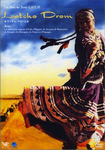 Latcho Drom, or ‘good travel’, by French director Tony Gatlif, has been described as „an intensely lyrical portrait of Gypsy culture„. With hardly any dialogue but a plethora of images, color, sounds, and music, the documentary gives the audience the experience of living side by side with an ancient nomadic group. The movie contains only enough hints to grasp the essential meaning of a song or conversation. The movie begins in Northern India and ends in Spain, passing through Egypt, Turkey, Romania, Hungary, Slovakia, France and Spain. Music is highly important to this movie as no interviews are captioned. The whole experience is enhanced by the fact that most of what is said is not even translated, because comprehension and mutual understanding does not always rely on the written word.
Latcho Drom, or ‘good travel’, by French director Tony Gatlif, has been described as „an intensely lyrical portrait of Gypsy culture„. With hardly any dialogue but a plethora of images, color, sounds, and music, the documentary gives the audience the experience of living side by side with an ancient nomadic group. The movie contains only enough hints to grasp the essential meaning of a song or conversation. The movie begins in Northern India and ends in Spain, passing through Egypt, Turkey, Romania, Hungary, Slovakia, France and Spain. Music is highly important to this movie as no interviews are captioned. The whole experience is enhanced by the fact that most of what is said is not even translated, because comprehension and mutual understanding does not always rely on the written word.

-
1995
POCAHONTAS
A Native American and a British settler breaking down prejudices
 Pocahontas tells the story of a Native American and a British settler who overcome cultural boundaries and fall in love. The two cultural groups (the natives and the settlers) mistrust eachother initially, however Pocahontas and John Smith slowly develop a friendship that shows that previously held prejudices were misunderstood. Through interaction and an expanded understanding of the one another’s culture they become more accepting of each other and fall in love.
Pocahontas tells the story of a Native American and a British settler who overcome cultural boundaries and fall in love. The two cultural groups (the natives and the settlers) mistrust eachother initially, however Pocahontas and John Smith slowly develop a friendship that shows that previously held prejudices were misunderstood. Through interaction and an expanded understanding of the one another’s culture they become more accepting of each other and fall in love.

-
1995
BOMBAY
Overcoming inter-religious relations
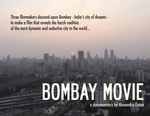 This Indian Tamil movie focuses on the debate surrounding Babri Madjid (a mosque in Ayodhya), its demolition in December 1992, and the riots that this caused, killing 2,000 people. The story follows a Muslim woman and a Hindu man who are torn apart during the riots. The film caused controversy due to its depiction of inter-religious relations and was initially banned in Singapore and Malaysia. However, it received international recognition and became the first Bollywood movie to make the UK top 10.
This Indian Tamil movie focuses on the debate surrounding Babri Madjid (a mosque in Ayodhya), its demolition in December 1992, and the riots that this caused, killing 2,000 people. The story follows a Muslim woman and a Hindu man who are torn apart during the riots. The film caused controversy due to its depiction of inter-religious relations and was initially banned in Singapore and Malaysia. However, it received international recognition and became the first Bollywood movie to make the UK top 10.
This movie is an example of Cultural Diplomacy because when the riots stop, the children are brought back safely to their families by both religions and thus cultural differences are put aside in the pursuit of peace.

-
1996
SPIRITED AWAY
Hayao Mayasaki (2006)
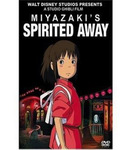 The cinema of Hayao Mayasaki frequently revisits themes of ecology, opposition to war, and a recovery of old Japanese values in contemporary society. In this respect, his cinematic output performs a vital cultural role in the comprehension of Japanese values; his work is imaginative, informative, and of great cultural importance. Spirited Away, Mayasaki’s most critically acclaimed animated film, explores the struggle of dissolving traditional culture and customs within an increasingly globalised society. As such, the filmmaker employs fundamental Shinto and Buddhist symbols in his film, the two religious cornerstones of the prevalent ideology in the Japanese belief system. By illustrating the conceptual base of these two ancient religions, the director makes direct links to Japan’s history and culture, reminding his Japanese audience of their rich cultural heritage, while simultaneously transmitting meaningful universal values to his foreign viewers. Thus, Mayasaki actively encourages the practice of Cultural Diplomacy by creating an international dialogue of Japanese culture; his work serves as one of the most tangible links between the Western and Oriental culture.
The cinema of Hayao Mayasaki frequently revisits themes of ecology, opposition to war, and a recovery of old Japanese values in contemporary society. In this respect, his cinematic output performs a vital cultural role in the comprehension of Japanese values; his work is imaginative, informative, and of great cultural importance. Spirited Away, Mayasaki’s most critically acclaimed animated film, explores the struggle of dissolving traditional culture and customs within an increasingly globalised society. As such, the filmmaker employs fundamental Shinto and Buddhist symbols in his film, the two religious cornerstones of the prevalent ideology in the Japanese belief system. By illustrating the conceptual base of these two ancient religions, the director makes direct links to Japan’s history and culture, reminding his Japanese audience of their rich cultural heritage, while simultaneously transmitting meaningful universal values to his foreign viewers. Thus, Mayasaki actively encourages the practice of Cultural Diplomacy by creating an international dialogue of Japanese culture; his work serves as one of the most tangible links between the Western and Oriental culture.

-
1997
MY AMERICA (OR HONK IF YOU LOVE BUDDHA)
The challenges for Asian Americans
 This documentary-film follows Renee Tajima-Peña as she reflects upon her childhood, a time where vacationing across state lines would mean not seeing another Asian face. However, times have now changed, and in this documentary Tajima-Peña hits the road to explore what it means to be Asian American in our rapidly changing world. She meets a diverse group of people - from eighth generation Filipinos in New Orleans to a fortune cookie entrepreneur Chung Y. Choi. She explores the challenges of Asian Americans, as they are no longer ‘the invisible minority’. The documentary strives to expose the real Asian Americans and ask: who are we?
This documentary-film follows Renee Tajima-Peña as she reflects upon her childhood, a time where vacationing across state lines would mean not seeing another Asian face. However, times have now changed, and in this documentary Tajima-Peña hits the road to explore what it means to be Asian American in our rapidly changing world. She meets a diverse group of people - from eighth generation Filipinos in New Orleans to a fortune cookie entrepreneur Chung Y. Choi. She explores the challenges of Asian Americans, as they are no longer ‘the invisible minority’. The documentary strives to expose the real Asian Americans and ask: who are we?

-
1997
SEVEN YEARS IN TIBET
A story about how travelling can deeply change a person
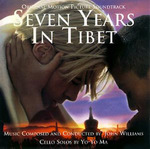 This cult movie by French director Annaud documents a long journey towards a new world. Harrer is an Austrian and alpinist maniac who shows little regard for his pregnant wife in the upcoming war in 1939, while he is going to climb the Parbat Mountain in the Himalayas. During the ascent, he is captured by British authorities in India, but manages to escape and to seek refuge in Lhasa, where he meets the 12th Dalai Lama and starts a profound friendship with him while discovering the Buddhist culture. This meeting is a catalyst for change within Harrer, and he finally finds a true peace that converts him from an emotionally challenged fugitive into a free man.
This cult movie by French director Annaud documents a long journey towards a new world. Harrer is an Austrian and alpinist maniac who shows little regard for his pregnant wife in the upcoming war in 1939, while he is going to climb the Parbat Mountain in the Himalayas. During the ascent, he is captured by British authorities in India, but manages to escape and to seek refuge in Lhasa, where he meets the 12th Dalai Lama and starts a profound friendship with him while discovering the Buddhist culture. This meeting is a catalyst for change within Harrer, and he finally finds a true peace that converts him from an emotionally challenged fugitive into a free man.

-
1998
BLACK CAT, WHITE CAT
A grotesque picture of Romanian culture
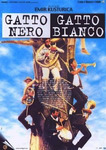 Shot in 3 different languages - Bulgarian, Serbian and Romani - Emir, Kusturica’s Black Cat, White Cat is one of the best-known Romanian films. It shows, via colorful cuts and scenes enlivened by traditional Balkan music, what lies behind the stereotype of the ‘gipsies’, whose history and customs are often ignored. Due to the international acclaim it received, the movie served as a means of understanding and unveiling the mysteries of the most stigmatized culture in Europe, enchanting many people along the way.
Shot in 3 different languages - Bulgarian, Serbian and Romani - Emir, Kusturica’s Black Cat, White Cat is one of the best-known Romanian films. It shows, via colorful cuts and scenes enlivened by traditional Balkan music, what lies behind the stereotype of the ‘gipsies’, whose history and customs are often ignored. Due to the international acclaim it received, the movie served as a means of understanding and unveiling the mysteries of the most stigmatized culture in Europe, enchanting many people along the way.

-
1999
EAST IS EAST
A different side of England
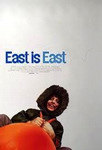 East Is East is a 1999 British comedy-drama film written by Ayub Khan-Din and directed by Damien O'Donnell. It is set in Salford, Greater Manchester in 1971, in a mixed-ethnicity British household headed by Pakistani father George (Om Puri) and an English mother, Ella (Linda Bassett). George expects his family to follow Pakistani ways, but his children, who were born and raised in Britain, consider themselves increasingly British and reject Pakistani customs of dress, food, and religion, leading to a rise in tensions and conflicts in the whole family. East is East is a small movie but an absorbing one. Thanks to uniformly excellent performances from a gifted cast and a careful modulation between humor and drama, the film emerges as a compelling and insightful glimpse into a life that is, as for all of us, so full of both terrifying and wonderful complexity.
East Is East is a 1999 British comedy-drama film written by Ayub Khan-Din and directed by Damien O'Donnell. It is set in Salford, Greater Manchester in 1971, in a mixed-ethnicity British household headed by Pakistani father George (Om Puri) and an English mother, Ella (Linda Bassett). George expects his family to follow Pakistani ways, but his children, who were born and raised in Britain, consider themselves increasingly British and reject Pakistani customs of dress, food, and religion, leading to a rise in tensions and conflicts in the whole family. East is East is a small movie but an absorbing one. Thanks to uniformly excellent performances from a gifted cast and a careful modulation between humor and drama, the film emerges as a compelling and insightful glimpse into a life that is, as for all of us, so full of both terrifying and wonderful complexity.

-
1999
TEA WITH MUSSOLINI
A different story and a different perspective of World War II
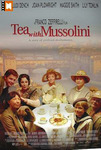 In 1935, Italy is under the grip of Fascism. A group of American and English ladies move to Florence, enchanted by art and the beauty of Tuscany, and one of them adopts Luca, a young boy who is sent to study in Austria on the eve of WWII. Arriving back in his hometown, he finds everything has changed: the country is at war and his mother and the other ladies have been imprisoned by the Fascist regime. The story concentrates on interpersonal relations in this complex contest, but one thing that unites the characters is a love for art. Angry at the Fascist regime (but not at Italy), the women fight to preserve the integrity of the towers of San Gimignano from a German attack and heroically defend the monument.
In 1935, Italy is under the grip of Fascism. A group of American and English ladies move to Florence, enchanted by art and the beauty of Tuscany, and one of them adopts Luca, a young boy who is sent to study in Austria on the eve of WWII. Arriving back in his hometown, he finds everything has changed: the country is at war and his mother and the other ladies have been imprisoned by the Fascist regime. The story concentrates on interpersonal relations in this complex contest, but one thing that unites the characters is a love for art. Angry at the Fascist regime (but not at Italy), the women fight to preserve the integrity of the towers of San Gimignano from a German attack and heroically defend the monument.

-
Late 90’s
KOREAN WAVE
Korean wave as a tool of Soft Power
 „Korean Wave„ is a neologism referring to the increase in popularity of the South Korean culture since the late 1990s. Originally coined in 1999 by Beijing journalists surprised by China’s reception of South Korean cultural production, the term was progressively associated to TV K-dramas broadcasted across East and Southeast Asia and, successively, most areas of the world.
„Korean Wave„ is a neologism referring to the increase in popularity of the South Korean culture since the late 1990s. Originally coined in 1999 by Beijing journalists surprised by China’s reception of South Korean cultural production, the term was progressively associated to TV K-dramas broadcasted across East and Southeast Asia and, successively, most areas of the world.
The expanding K-pop culture trend can be perceived as a tool of soft power, through which the South Korean government pursues a cultural exchange between South Korea and the rest of the world touched by this trend.

-
2000
JALLA
Cross cultural fun
 Jalla! is a light and intelligently funny Swedish-Arabic film written and directed by Josef Fares, a Lebanese filmmaker who moved to Sweden as a child. An earnest comedy about love, friendship, warring cultures, and sexual impotence, this feeble romantic comedy celebrates the fun union of cultures, while touching on cross-cultural and sexual issues with a naturalistic tone. It is a comedy that deals with relationships, sex, and marriages. "Jalla! Jalla!" reflects a cultural conundrum that rolls out the story like a playful comedy of errors. It employs carefully utilized comic devices behind its deeper shades of sadness, longing, and self-realization. It is happily glossed over as a light comedy with a particular flair in buoying the story with subtle points about cultures and relationships.
Jalla! is a light and intelligently funny Swedish-Arabic film written and directed by Josef Fares, a Lebanese filmmaker who moved to Sweden as a child. An earnest comedy about love, friendship, warring cultures, and sexual impotence, this feeble romantic comedy celebrates the fun union of cultures, while touching on cross-cultural and sexual issues with a naturalistic tone. It is a comedy that deals with relationships, sex, and marriages. "Jalla! Jalla!" reflects a cultural conundrum that rolls out the story like a playful comedy of errors. It employs carefully utilized comic devices behind its deeper shades of sadness, longing, and self-realization. It is happily glossed over as a light comedy with a particular flair in buoying the story with subtle points about cultures and relationships.

-
2001
PROMISES
A documentary film about the Palestinian-Israeli conflict through the eyes of seven children
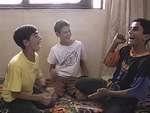 Promises is a documentary film that analyses the Israeli-Palestinian conflict from the point of view of seven children. What makes this documentary particularly interesting for the field of Cultural Diplomacy is the fact that all the children have different backgrounds, different cultures, different religions and different personal circumstances. Some of them live in refugee camps, other lives in Israeli settlements, others are orthodox Jews, and others are secular Jews. This documentary shows how the Middle East conflict is seen through the eyes of the kids and how they have strong opinions about it despite the fact that they are between nine and thirteen years old. However, the aim of B.Z Goldberg, the Israeli/American filmmaker, is to put them in contact and show how they can become friends by playing and sharing experiences despite the prejudices they have acquired due to their personal circumstances.
Promises is a documentary film that analyses the Israeli-Palestinian conflict from the point of view of seven children. What makes this documentary particularly interesting for the field of Cultural Diplomacy is the fact that all the children have different backgrounds, different cultures, different religions and different personal circumstances. Some of them live in refugee camps, other lives in Israeli settlements, others are orthodox Jews, and others are secular Jews. This documentary shows how the Middle East conflict is seen through the eyes of the kids and how they have strong opinions about it despite the fact that they are between nine and thirteen years old. However, the aim of B.Z Goldberg, the Israeli/American filmmaker, is to put them in contact and show how they can become friends by playing and sharing experiences despite the prejudices they have acquired due to their personal circumstances.

-
2002
MY BIG FAT GREEK WEDDING
Dealing with ethnic identities through a love story
 When Greek Fotoula falls in love with Ian, an Anglo-Saxon Protestant, she struggles to encourage her family to accept him, whilst he attempts to understand his girlfriends’ Orthodox-Christian and Greek traditions. The bride-to-be has to organize a meeting between his boyfriend’s family and her own. This comedy is not only about romance but also, interestingly and accessibly, brings to the fore the problems that can arise when dealing with differing identities in the contemporary world.
When Greek Fotoula falls in love with Ian, an Anglo-Saxon Protestant, she struggles to encourage her family to accept him, whilst he attempts to understand his girlfriends’ Orthodox-Christian and Greek traditions. The bride-to-be has to organize a meeting between his boyfriend’s family and her own. This comedy is not only about romance but also, interestingly and accessibly, brings to the fore the problems that can arise when dealing with differing identities in the contemporary world.

-
2002
L’AUBERGE ESPAGNOLE
Viktor Klapisch (2002)
 Klapisch’s world-renowned 2002 comedy documents a year spent in Barcelona by French student Xavier (Romain Duris) as part of the Euro-friendly Erasmus programme. The film follows the struggles of Xavier as he encounters, befriends, and lives with a truly international group of students hailing from far-flung corners of Europe. Although the film is predominantly narrated in French, Klapisch successfully integrates a multiplicity of languages and dialects into his script, and as such celebrates the nuance of communication (and miscommunication!) between cultures. By depicting an overwhelmingly positive portrait of an international community in his film, Klapisch has encouraged a generation of young students to embrace the Erasmus programme. Despite the inevitable teething problems that moving to a foreign country can entail, there is an unmistakable message emanating from the film: „L’Europe, c’est possible„.
Klapisch’s world-renowned 2002 comedy documents a year spent in Barcelona by French student Xavier (Romain Duris) as part of the Euro-friendly Erasmus programme. The film follows the struggles of Xavier as he encounters, befriends, and lives with a truly international group of students hailing from far-flung corners of Europe. Although the film is predominantly narrated in French, Klapisch successfully integrates a multiplicity of languages and dialects into his script, and as such celebrates the nuance of communication (and miscommunication!) between cultures. By depicting an overwhelmingly positive portrait of an international community in his film, Klapisch has encouraged a generation of young students to embrace the Erasmus programme. Despite the inevitable teething problems that moving to a foreign country can entail, there is an unmistakable message emanating from the film: „L’Europe, c’est possible„.

-
2005
SABAH
Love goes beyond cultural differences
 Sabah comes from a conservative Arab family. Her quiet life is shaken when she meets Stephen, a non-Muslim. This romantic comedy shows what happens when Sabah introduces her new American boyfriend to her family. The film shows the power of love to transcend cultural differences.
Sabah comes from a conservative Arab family. Her quiet life is shaken when she meets Stephen, a non-Muslim. This romantic comedy shows what happens when Sabah introduces her new American boyfriend to her family. The film shows the power of love to transcend cultural differences.

-
2006
TEN CANOES
A story of linguistic and cultural identity
 The Australian movie Ten Canoes is set in Australia, in a time before the Western settlement. It tells the story of several Aboriginal tribes and is the first ever movie entirely filmed in Australian Aboriginal languages, which allowed the director to give a voice to Aboriginal people from Australia.
The Australian movie Ten Canoes is set in Australia, in a time before the Western settlement. It tells the story of several Aboriginal tribes and is the first ever movie entirely filmed in Australian Aboriginal languages, which allowed the director to give a voice to Aboriginal people from Australia.

-
2006
OUTSOURCED
A story about an expat confronting the cultural shock in India
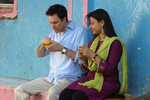 American products salesman Todd Anderson moves to Mumbai after his department is outsourced. He is given the task of explaining the American working culture to his employees. At the same time, he struggles to understand the Indian culture while he falls in love with an Indian girl. This film shows the cross-cultural interaction between Americans and Indians.
American products salesman Todd Anderson moves to Mumbai after his department is outsourced. He is given the task of explaining the American working culture to his employees. At the same time, he struggles to understand the Indian culture while he falls in love with an Indian girl. This film shows the cross-cultural interaction between Americans and Indians.

-
2006
TÜRKISCH FÜR ANFÄNGER
German and Turkish culture living together
 The TV-show Türkisch für Anfänger (Turkish for Beginners) reflects on how Germans and Turks cohabit and interact in Germany. The protagonist is a 16 year-old German girl who narrates the experiences she lives when her mum gets married to a Turkish police officer. They then become the Schneider-Oztürk family and Lena has to learn to live together with her Turkish step-brothers and learn how to deal with the cultural differences.
The TV-show Türkisch für Anfänger (Turkish for Beginners) reflects on how Germans and Turks cohabit and interact in Germany. The protagonist is a 16 year-old German girl who narrates the experiences she lives when her mum gets married to a Turkish police officer. They then become the Schneider-Oztürk family and Lena has to learn to live together with her Turkish step-brothers and learn how to deal with the cultural differences.

-
2007
ULZHAN
A journey through a man and a culture
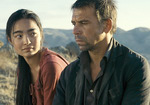 Ulzhan, directed by Volker Schlöndorff, is an international co-production between France and Kazakhstan. It tells the story of a French man travelling through Kazakhstan, where he attempts to reach the holy mountain Khan Tengri, accompanied by a New Age shaman and a nomad girl that he meets on his way. This is a thoughtful journey through the country and the mind of the traveller. The director offers a portrait of Kazakhstan that reflects the country’s complexity.
Ulzhan, directed by Volker Schlöndorff, is an international co-production between France and Kazakhstan. It tells the story of a French man travelling through Kazakhstan, where he attempts to reach the holy mountain Khan Tengri, accompanied by a New Age shaman and a nomad girl that he meets on his way. This is a thoughtful journey through the country and the mind of the traveller. The director offers a portrait of Kazakhstan that reflects the country’s complexity.

-
2007
ARRANGED
Friendship transcending religion
 Rochel, an Orthodox Jew, starts working as a teacher at a Brooklyn school, where she meets Nasira, a Muslim woman of a similar age. These co-workers start becoming good friends when they realize that they have a lot in common, especially when it comes to combining their life in America and keeping hold of their traditional cultures.
Rochel, an Orthodox Jew, starts working as a teacher at a Brooklyn school, where she meets Nasira, a Muslim woman of a similar age. These co-workers start becoming good friends when they realize that they have a lot in common, especially when it comes to combining their life in America and keeping hold of their traditional cultures.

-
2007
THE BAND’S VISIT - BIKUR HA-TIZMORET
We are all just ordinary people
 This story is about eight men who arrive in Israel from Egypt and end up taking the wrong bus due to a language barrier. This bus drops them in an Israeli town, leaving the men lost with no way of returning. However, the men manage to find friendship with the locals and rise above previous cultural challenges. The movie depicts Arabs and Israelis as ordinary people, with similarly ordinary lives. It signifies an overcoming of cultural barriers and thus prompts a questioning of previous conflicts between these two groups.
This story is about eight men who arrive in Israel from Egypt and end up taking the wrong bus due to a language barrier. This bus drops them in an Israeli town, leaving the men lost with no way of returning. However, the men manage to find friendship with the locals and rise above previous cultural challenges. The movie depicts Arabs and Israelis as ordinary people, with similarly ordinary lives. It signifies an overcoming of cultural barriers and thus prompts a questioning of previous conflicts between these two groups.

-
2008
DAMBÉ: THE MALI PROJECT
Two Irish musicians in Mali: a Celtic-African tale
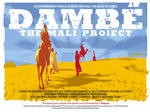 The Mali Project is a documentary that follows the journey of two Irish Folk musicians, on a musical adventure in Mali. They travel for over 3,000 miles, meeting musicians from all around the country and performing with them, whilst sharing experiences and stories. Director Dearbhla Glynn artfully captures their adventure. Their ultimate destination is the amazing Festival au Desert, a huge event that takes place in Timbuktu featuring Malian musicians. They perform to an audience of thousands at this remote music festival. The result is an astonishing fusion of the varying arts, techniques and worlds: flutes playing alongside traditional African percussion, or even a Kora (the traditional Malian instrument) and a Celtic harp, in perfect musical and cultural harmony.
The Mali Project is a documentary that follows the journey of two Irish Folk musicians, on a musical adventure in Mali. They travel for over 3,000 miles, meeting musicians from all around the country and performing with them, whilst sharing experiences and stories. Director Dearbhla Glynn artfully captures their adventure. Their ultimate destination is the amazing Festival au Desert, a huge event that takes place in Timbuktu featuring Malian musicians. They perform to an audience of thousands at this remote music festival. The result is an astonishing fusion of the varying arts, techniques and worlds: flutes playing alongside traditional African percussion, or even a Kora (the traditional Malian instrument) and a Celtic harp, in perfect musical and cultural harmony.

-
2008
SLUMDOG MILLIONAIRE
An Indian story narrated by an Englishman
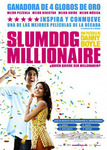 When Slumdog Millionaire was publicised, director Danny Boyle was accused of being pretentious in trying to portray a culture that was not his own. The movie tells a fictional and beautiful story about a boy, born into grave poverty in Mumbai, who attempts to win the jackpot on the Indian version of the TV quiz Who Wants to be a Millionaire. Each and every question he answers tells a part of his story: how he grew up in the suburbs; all he had to go through to survive; and a fantastically romantic love story, all framed by a colourful, bold cinematography, and a lively musical score, that pay homage to Bollywood. The international acclaim that the movie received dispelled any doubts about the director’s motivations, and actually served to enlighten the rest of the world about some interesting aspects of Indian culture.
When Slumdog Millionaire was publicised, director Danny Boyle was accused of being pretentious in trying to portray a culture that was not his own. The movie tells a fictional and beautiful story about a boy, born into grave poverty in Mumbai, who attempts to win the jackpot on the Indian version of the TV quiz Who Wants to be a Millionaire. Each and every question he answers tells a part of his story: how he grew up in the suburbs; all he had to go through to survive; and a fantastically romantic love story, all framed by a colourful, bold cinematography, and a lively musical score, that pay homage to Bollywood. The international acclaim that the movie received dispelled any doubts about the director’s motivations, and actually served to enlighten the rest of the world about some interesting aspects of Indian culture.

-
2009
THE CONCERT
A comedy on the greatness of music
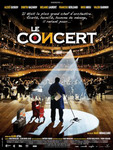 Former conductor of the Bolshoi orchestra in Moscow, Filipov was fired from his beloved job by soviet authorities when he refused to expel all Jewish musicians from the orchestra. When he gets the chance, many years later, to arrange a show in the prestigious Chatelet theatre in Paris, he decides to reunite his former orchestra. At first the concert faces cancellation because of the disinterest and incompatibility of the culturally diverse group of musicians. However, this mix of cultures and styles of music is eventually harnessed and harmonised, rendering the concert a total success.
Former conductor of the Bolshoi orchestra in Moscow, Filipov was fired from his beloved job by soviet authorities when he refused to expel all Jewish musicians from the orchestra. When he gets the chance, many years later, to arrange a show in the prestigious Chatelet theatre in Paris, he decides to reunite his former orchestra. At first the concert faces cancellation because of the disinterest and incompatibility of the culturally diverse group of musicians. However, this mix of cultures and styles of music is eventually harnessed and harmonised, rendering the concert a total success.

-
2009
INVICTUS
Nelson Mandela in first year of presidency uses sport to win a match against Apartheid and cultural hatred
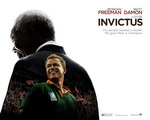 In the first year of Nelson Mandela’s presidency, South Africa was still torn apart by post-Apartheid problems. The president’s hardest challenge was to turn a previously racist nation into a modern, culturally integrated land. Apartheid was indeed officially over, but not in the hearts of the people. Mandela, while attending a rugby game, noticed that black people cheered for the opposite team because the Springboks used to be an all-white team. At this precise moment, he decided that sport could be integral to eliminating racial prejudice, and persuaded the team to participate to the 1995 Rugby World Cup with a new black and white formation. Invictus, by Clint Eastwood, is a movie about integration, and how sports can unite and inspire a whole Nation.
In the first year of Nelson Mandela’s presidency, South Africa was still torn apart by post-Apartheid problems. The president’s hardest challenge was to turn a previously racist nation into a modern, culturally integrated land. Apartheid was indeed officially over, but not in the hearts of the people. Mandela, while attending a rugby game, noticed that black people cheered for the opposite team because the Springboks used to be an all-white team. At this precise moment, he decided that sport could be integral to eliminating racial prejudice, and persuaded the team to participate to the 1995 Rugby World Cup with a new black and white formation. Invictus, by Clint Eastwood, is a movie about integration, and how sports can unite and inspire a whole Nation.

-
2009
AJAMI
The first Arabic language movie to portray Israel at Oscars
 Ajami was co-written, directed, and produced by Palestinians and Jewish-Israelis, and was the first Arabic language film to portray Israel at the Oscars. The plot covers five storylines that take place in a former slum in the city of Jaffa; a violent reality is shown throughout the movie, much different from the sweetened portrait usually offered by the authorities. The story is told from several different perspectives, and the audience is thus driven to sympathize with characters from both sides of the conflict: the labels of ‘good’ and ‘evil’ are too prescriptive for the issues depicted in the movie. Although the conclusion certainly doesn’t constitute a happy ending, the movie demands that the audience considers both sides of the conflict with an understanding that is not black or white.
Ajami was co-written, directed, and produced by Palestinians and Jewish-Israelis, and was the first Arabic language film to portray Israel at the Oscars. The plot covers five storylines that take place in a former slum in the city of Jaffa; a violent reality is shown throughout the movie, much different from the sweetened portrait usually offered by the authorities. The story is told from several different perspectives, and the audience is thus driven to sympathize with characters from both sides of the conflict: the labels of ‘good’ and ‘evil’ are too prescriptive for the issues depicted in the movie. Although the conclusion certainly doesn’t constitute a happy ending, the movie demands that the audience considers both sides of the conflict with an understanding that is not black or white.

-
2010
WHEN CHINA MET AFRICA
A fascinating documentary which raises big questions about the global balance of power
 When China Met Africa is a documentary by Nick Francis and Marc Francis and set on the front line of Chinaʼs foray into Africa. It follows the lives of a Chinese farmer, a road builder, and the Zambian trade minister. An historic gathering of over fifty African heads of state in Beijing reverberates in Zambia where the lives of three characters unfold. Mr Liu is one of thousands of Chinese entrepreneurs who have settled in Africa in search of new opportunities. He has just bought his fourth farm and business is booming.
In northern Zambia, Mr Li, a project manager for a multinational Chinese company, is upgrading Zambia's longest road. Pressure to complete the road on time intensifies when funds from the Zambian government begin to dry up. Meanwhile, Zambia's Trade Minister is on route to China to secure millions of dollars of investment. Through the intimate portrayal of these characters, the expanding footprint of a rising global power is laid bare - pointing to a radically different future, not just for Africa, but also for the world. It is characterized as an eye-opening documentary that unflinchingly depicts that China is a new economic superpower. The Times described it as 'a rare, grass-roots view into one of the most important economic developments of the age'.
When China Met Africa is a documentary by Nick Francis and Marc Francis and set on the front line of Chinaʼs foray into Africa. It follows the lives of a Chinese farmer, a road builder, and the Zambian trade minister. An historic gathering of over fifty African heads of state in Beijing reverberates in Zambia where the lives of three characters unfold. Mr Liu is one of thousands of Chinese entrepreneurs who have settled in Africa in search of new opportunities. He has just bought his fourth farm and business is booming.
In northern Zambia, Mr Li, a project manager for a multinational Chinese company, is upgrading Zambia's longest road. Pressure to complete the road on time intensifies when funds from the Zambian government begin to dry up. Meanwhile, Zambia's Trade Minister is on route to China to secure millions of dollars of investment. Through the intimate portrayal of these characters, the expanding footprint of a rising global power is laid bare - pointing to a radically different future, not just for Africa, but also for the world. It is characterized as an eye-opening documentary that unflinchingly depicts that China is a new economic superpower. The Times described it as 'a rare, grass-roots view into one of the most important economic developments of the age'.

-
2010
THE WOMEN OF THE SIXTH FLOOR
Exploring Spanish traditional culture from the sixth floor of a Parisian building
 This social comedy exposes the life of a group of Spanish cleaning ladies who work in Paris for particularly affluent French families. The story follows one of the propriétaires who becomes friends with her employer, a French stockbroker. She shows him a simple but cheerful lifestyle, and traditions that vary greatly from his own. The film delightfully displays the interaction between Spanish immigrants and French families during the 60’s.
This social comedy exposes the life of a group of Spanish cleaning ladies who work in Paris for particularly affluent French families. The story follows one of the propriétaires who becomes friends with her employer, a French stockbroker. She shows him a simple but cheerful lifestyle, and traditions that vary greatly from his own. The film delightfully displays the interaction between Spanish immigrants and French families during the 60’s.

-
2010
A SMALL ACT
How scholarships can change your life
 This is a documentary tells the story of a Kenyan child who was able to access higher education due to a scholarship he obtained from a female Jew living in Sweden, as a reward for his good grades. This opportunity changes his life because for most Kenyan children free education ends at eleven years old. When he grows up and becomes a United Nations human rights advocate, he decides to create a scholarship program in order to offer the same opportunity he was offered to other children. The story revolves around three students who wish to apply for the same scholarship. It is relevant to cultural diplomacy because it shows how important scholarships can be to promote education and give opportunities to children born with limited resources.
This is a documentary tells the story of a Kenyan child who was able to access higher education due to a scholarship he obtained from a female Jew living in Sweden, as a reward for his good grades. This opportunity changes his life because for most Kenyan children free education ends at eleven years old. When he grows up and becomes a United Nations human rights advocate, he decides to create a scholarship program in order to offer the same opportunity he was offered to other children. The story revolves around three students who wish to apply for the same scholarship. It is relevant to cultural diplomacy because it shows how important scholarships can be to promote education and give opportunities to children born with limited resources.

-
2011
KATMANDÚ
Understanding Nepalese culture through a volunteering project
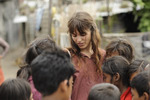 Laila, a Spanish teacher, moves to Kathmandu as a volunteer at a local school. She faces a strong cultural shock when she discovers an exclusive educational system that excludes a large part of the population. She decides to start a daring educational project, directed at the children in the slums. In order for her educational project to go ahead, she realizes that she will have to marry a Nepalese man in order to legalize her situation. Although tough at first, Laila falls in love with the stranger she married and becomes very good friends with Sharmila, a Nepali co-worker. Through this cultural immersion, Laila begins to understand the depth of the Nepalese society and traditions.
Laila, a Spanish teacher, moves to Kathmandu as a volunteer at a local school. She faces a strong cultural shock when she discovers an exclusive educational system that excludes a large part of the population. She decides to start a daring educational project, directed at the children in the slums. In order for her educational project to go ahead, she realizes that she will have to marry a Nepalese man in order to legalize her situation. Although tough at first, Laila falls in love with the stranger she married and becomes very good friends with Sharmila, a Nepali co-worker. Through this cultural immersion, Laila begins to understand the depth of the Nepalese society and traditions.

-
2012
WHERE DO WE GO NOW?
Muslim and Christian women united to end the absurdity of the war
 This Lebanese film tells the story of a group of Muslim and Christian women who plot to stop the ongoing fight between their husbands. After hearing news about the rise of religious disagreement in the neighboring areas, a local conflict commences when the Christians discover a damaged cross in their church, and the Muslims find a defiled mosque. The women decide to organize a series of witty events to distract the men from continuing with the fighting.
This Lebanese film tells the story of a group of Muslim and Christian women who plot to stop the ongoing fight between their husbands. After hearing news about the rise of religious disagreement in the neighboring areas, a local conflict commences when the Christians discover a damaged cross in their church, and the Muslims find a defiled mosque. The women decide to organize a series of witty events to distract the men from continuing with the fighting.

-
2012
UNDER THE SAME SUN
Overcoming cultural and familial differences
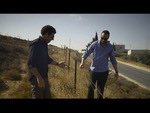 This movie, set in the future, casts a retrospective glance at the moment when peace was brokered between Israel and Palestine. The story follows a Palestinian and an Israeli businessman, who are struggling to set up a company together because of a strong cultural divide between their families. The movie shows how the men overcome the cultural divisions between their families in order to start their business peacefully and efficiently. The title of the film resonates in that it depicts us all as living in the same world despite the differences we may have. This movie also represents a transcendence of cultural borders through the social medium of Facebook, a medium that helps the businessmen to promote their company.
This movie, set in the future, casts a retrospective glance at the moment when peace was brokered between Israel and Palestine. The story follows a Palestinian and an Israeli businessman, who are struggling to set up a company together because of a strong cultural divide between their families. The movie shows how the men overcome the cultural divisions between their families in order to start their business peacefully and efficiently. The title of the film resonates in that it depicts us all as living in the same world despite the differences we may have. This movie also represents a transcendence of cultural borders through the social medium of Facebook, a medium that helps the businessmen to promote their company.

-
2012
THE OTHER SON
An accident pushed both families to understand the ‘other’
 When 18 year-old Joseph Silberg is to join the Israeli Defense Forces, the routine tests show that his DNA is different to that of his family. The hospital where he was born conducts an investigation and discovers that the day Joseph was born he was taken to a shelter after a bombing attack and switched by mistake with another baby: Yacine Al Bezaaz. Initially, the parents are reluctant to accept the situation, but the circumstances force them to reconsider their resistance and to understand the motivations of the ‘other’. The underlying story points out that direct interaction and immersion in the daily life of the enemy leads to cross-cultural understanding.
When 18 year-old Joseph Silberg is to join the Israeli Defense Forces, the routine tests show that his DNA is different to that of his family. The hospital where he was born conducts an investigation and discovers that the day Joseph was born he was taken to a shelter after a bombing attack and switched by mistake with another baby: Yacine Al Bezaaz. Initially, the parents are reluctant to accept the situation, but the circumstances force them to reconsider their resistance and to understand the motivations of the ‘other’. The underlying story points out that direct interaction and immersion in the daily life of the enemy leads to cross-cultural understanding.

-
2013
THE LUNCHBOX
The world’s most efficient business model
 The Lunchbox is a romantic comedy about Mumbai’s famously efficient lunchbox system. A wrongly delivered lunchbox connects a housewife with an older businessman and they start sending love notes. The movie is centred on the dabawallas, a group of individuals in India who collect and deliver hot food in lunch boxes from the homes of the workers in the city of Mumbai. The dabawalla system has been recognised as one of the most efficient systems and this has led to many awards and studies on the 125-year old dabbawala industry. Prince Charles of England was so impressed by the system that he invited them to his wedding. The success of the industry has been recognised by the Prime Minister of the Netherlands and top managers at Mercedes Benz. The movie is a fantastic example of Cultural Diplomacy as it depicts a system and culture that many people do not know about, but that has been internationally recognised and acclaimed.
The Lunchbox is a romantic comedy about Mumbai’s famously efficient lunchbox system. A wrongly delivered lunchbox connects a housewife with an older businessman and they start sending love notes. The movie is centred on the dabawallas, a group of individuals in India who collect and deliver hot food in lunch boxes from the homes of the workers in the city of Mumbai. The dabawalla system has been recognised as one of the most efficient systems and this has led to many awards and studies on the 125-year old dabbawala industry. Prince Charles of England was so impressed by the system that he invited them to his wedding. The success of the industry has been recognised by the Prime Minister of the Netherlands and top managers at Mercedes Benz. The movie is a fantastic example of Cultural Diplomacy as it depicts a system and culture that many people do not know about, but that has been internationally recognised and acclaimed.


